|
Introduction Ballistic missiles are rocket-propelled, self-guided vehicles that follow a ballistic trajectory to deliver nuclear or conventional weapons. They can be launched from aircraft, ships, and submarines in addition to land-based silos and mobile platforms. Ballistic missile systems are cost-effective weapons and symbols of national power. This article is comparing the ballistic missile arsenals of two nuclear armed countries India & China. These two nuclear powers has sufficiently developed ballistic missile program to hit each other. China's program began way back in 50s with Russian help while India's program is totally indigenous & new. People's Liberation Army Rocket Force People's Liberation Army Rocket Force, formerly the Second Artillery Corps is the strategic and tactical missile forces of the People's Republic of China. The PLARF is a component part of the People's Liberation Army and controls the nation's arsenal of land-based ballistic missiles—both (thermo) nuclear and conventional. On December 31, 2015, as part of a sweeping reorganisation and modernisation drive, China’s missile force, the Second Artillery Force , was formally elevated to a full ‘service’ and renamed the Rocket Force. This move recognised the increasing importance of China’s conventional and nuclear missile forces for the country’s military strategy and national security. In addition, it formalised the de facto status of China’s missile forces within the PLA given that the Second Artillery Force has played a role similar to a full service for decades. PLARF missions The PLARF has two key missions: strategic deterrence and war fighting. As the successor of the SAF, the PLARF is the ‘core force of China for strategic deterrence’ with the responsibility for ‘deterring other countries from using nuclear weapons against China.’ As part of its strategic deterrence mission, the PLARF conducts a diverse range of operations, including the display of combat readiness and missile capabilities through the media, military parades, military exercises, and force deployments. In addition, the PLARF is also responsible for nuclear counterattack ‘either independently or together with the nuclear forces of other [PLA] services’. Under China’s nuclear strategy, nuclear counterattack serves primarily a strategic purpose, such as to deter future nuclear aggression. However, authoritative PLA texts suggest that nuclear counterattacks may also serve secondary operational objectives. In terms of conventional war fighting, the PLARF is responsible for ‘conducting medium- and long-range precision strikes’ with land-based conventional missiles against ‘key strategic and operational targets of the enemy’. The PLA’s conventional missile strategy acknowledges that due to the limited number and high cost of the PLARF’s conventional missiles, ‘the types of targets suitable for conventional missile strike is limited.’ As such, during joint operations, China’s conventional missile force will be used against high-threat and high-value enemy targets, such as reconnaissance and early warning systems , electronic countermeasure systems , anti-air and anti-missile positions , and military bases. The goal of PLARF conventional missile operations is to ‘degrade the enemy’s combat system’ and ‘suppress its operational capabilities’ in order to ‘create the necessary conditions for follow up operations by other service branches of the PLA’ . In addition, the PLARF has a clear counter space role that involves the operation of antisatellite missiles. While much of the PLA’s military space mission was consolidated under the new PLA Strategic Support Force created at the same time as the PLARF, the PLA’s anti-satellite missile capabilities remain under its missile forces. For the PLARF, ‘an important direction in its development’ is to ‘extend its operational capabilities to new areas, such as space’. In fact, according to current PLA missile strategy, under special circumstances, the PLARF’s missiles can be used to strike key nodes in the enemy’s space and information network, such as military satellites. It is envisaged that this would create wider effects on the enemy’s operational systems, thereby creating the conditions for the PLA to ‘seize strategic initiative’. It is also the case that the PLARF’s missile forces could target and attack an adversary’s space related land-based infrastructure, such as telemetry, tracking and control sites and other space communications systems. These PLARF counter space roles will in turn demand enhanced coordination and deconfliction with the PLA Strategic Support Force and its counter space and cyber offense role, adding another layer of command and control challenges for the newly-reorganised strategic forces of the PLA. PLARF nuclear strategy China’s latest defence white paper, the 2015 China’s Military Strategy, presents what has been a longstanding and largely consistent position with respect to nuclear weapons: ‘China has always pursued the policy of no first use of nuclear weapons and adhered to a self-defensive nuclear strategy.’ In addition, ‘China will unconditionally not use or threaten to use nuclear weapons against non-nuclear-weapon states or in nuclear-weapon-free zones.’ The White Paper also asserts that ‘China has always kept its nuclear capabilities at the minimum level required for maintaining its national security,’ and the reason for the modernisation of Chinese nuclear forces is only to ‘deter other countries from using or threatening to use nuclear weapons against China’. The positions outlined above are consistent with both past official pronouncements and authoritative PLA publications. For example, in its chapter on nuclear strategy, the 2013 Science of Military Strategy stresses three key points. First, China’s nuclear weapons are used for strategic deterrence and counter nuclear coercion purposes only, and ‘the target of [China’s] nuclear deterrence is limited to other nuclear-armed states.’ Second, China pursues ‘a policy of no first use of nuclear weapons,’ and it will only use nuclear weapons in self-defence when it comes under nuclear attack. Third, China adopts ‘revenge’ logic of nuclear deterrence and would seek to reinforce the credibility and efficiency of nuclear deterrence through improving capabilities for nuclear counterattack. While China’s declared strategy in the white paper is a restatement of earlier positions, its evolving capabilities are opening up new strategic options. This can be illustrated, for example, in the case of nuclear counterattack. In the past, Chinese nuclear doctrine emphasised that nuclear retaliation would occur only after China had absorbed an enemy’s nuclear attack. However, the mobility, readiness and informatisation of PLARF units and the PLA’s new space-based early warning system makes it increasingly feasible for China to adopt a ‘launch on warning’ posture that would have been impossible in the past. PLARF bases and brigades The PLARF remains organized in a series of corps leader grade ‘bases’, now numbering nine in total. Six of them (bases 61–66) command the force’s operational missile brigades, while the other three handle warhead storage and transport (67 Base), specialist engineering (68 Base) and test and training (69 Base). The multiple new missile brigades formed during 2017 are now beginning to take shape, with some resultant relocation of units and changes to equipment and missions. In 62 Base, a combination of rebasing of existing units and the formation of two new brigades is likely to result in an additional brigade of DF-21D medium-range ballistic missiles (MRBMs) and a first brigade of DF-26 intermediate range ballistic missiles being formed in southern China. Both of these missile types have anti-ship capabilities and when the brigades reach operational capability will add to the PLARF’s ability to hold at risk possible targets in the South China Sea and Indian Ocean. In northern China, the new brigade in 65 Base will also most probably equip with the DF-21D, since it is currently co-located in Dalian, Liaoning province, with an existing DF-21D formation. This would result in a doubling of the PLARF’s anti-ship ballistic missile brigades, when compared to its roster before the reorganization began. The two new brigades formed in 64 and 66 bases are both likely to work up as road-mobile intercontinental ballistic missile (ICBM) units; one is most probably charged with bringing the still-developmental DF-41 (CH-SS-X-20) ICBM into service, while the other will probably equip with either the DF-31A(G) ICBM or additional DF-41s. Both of these missiles are believed to be capable of deploying multiple independently targetable re-entry vehicles. The new brigades would mark the first expansion of the PLARF’s road-mobile ICBM fleet in nearly a decade. In late 2017, media reports described two test firings of a new developmental short-range ballistic missile or MRBM, reportedly with a hypersonic glide-vehicle payload. It is reported that this missile may have the PLA designation DF-17, but there is limited further information available on the missile; its connections, if any, to existing PLARF designs; and its intended mission. Base number – Headquarters- Brigades/missile types Base 61 Huangshan, Anhui Province
Base 62 Kunming, Yunnan Province
Base 63 Huaihua, Hunan Province
Base 64 Lanzhou, Gansu Province
Base 65 Shenyang, Liaoning Province
Base 66 Luoyang, Henan Province
Base 67 Baoji, Shaanxi Province Responsible for management, storage, handling of nuclear warheads and nuclear weapons training. In addition, it is believed to form part of the nuclear Command, Control and Communications network,
Intercontinental ballistic missiles DF-4 (CSS 3) The DF-4 is a two-stage intermediate to intercontinental-range, transportable, liquid-fueled ballistic missile. It has an estimated range of 4,500-5,500 km and carries a 2,200 kg payload. Its payload is designed to accommodate a single nuclear warhead with a yield between 1 and 3 megatons and has an accuracy of approximately 1.5 km CEP. It has a length of 28.0 m, a body diameter of 2.25 m, and a launch weight of 82,000 kg. Development of the DF-4 began in 1965, in parallel with the DF-3. The missile was originally designed to strike U.S. bases in Guam, but following clashes along the Sino-Soviet border in 1969, the DF-4 was redesigned to extend its range to be capable of striking Moscow. Perhaps 25 DF-4 ICBMs are deployed. The missiles are based in silos, including those in northwestern China. The DF-4s have a response time of perhaps 2.5 hours. They have two stages and use storable liquid propellant and strap-down inertial guidance. The missiles have also been produced as boosters for the Long March space vehicles that launch satellites. Two launch configurations exist for the CSS-3: a rollout-to-launch site and an elevate-to-launch silo. Many of the DF-4s are stored in tunnels under high mountains, and are launched immediately outside the mouth of the tunnel. The missiles must be moved into the open and fueled prior to firing, an operational mode dubbed chu men fang pao (shooting a firecracker outside the front door), with the fueling operation apparently requiring hours.DF-4 missiles are slowly being replaced by the DF-21 missile. CEP -1500m DF-5 The basic variant DF-5 had a maximum range of just less than 10,000 km. The early DF-5 warhead does not have manoeuvre capability, so the re-entry vehicle would make an unpowered descent through the atmosphere to a pre-selected target on the orbital ground track. The estimated CEP for the warhead was over 1,000 m. DF-5 is a liquid-fueled ICBM first deployed in the mid-1980s. This heavy-lift ICBM was designed for use with a single large-yield warhead. As part of modernization effort, the DF-5 is due to be replaced by the DF-41. The DF-5 consists of two stages connected by an inter-stage structure, all 3.35 m in diameter. Each stage has two propellant tanks: an oxidiser tank at the front and a fuel tank at the rear, connected by an inter-tank ring section. Oxidiser is pumped to the engines via a pipe penetrating through the centre of the rear fuel tank. The two propellant tanks and the inter-tank ring section form part of the vehicle’s thrust and weight bearing load structure and are constructed from high-strength aluminium-alloy LD10. The DF-5 was the first Chinese ballistic missile to have adopted a ‘Computer-Platform’ inertial guidance system. The system utilises a fluid-suspended gyro-stabilized platform (Project 157), with gas bearing gyroscopes to achieve a high degree of accuracy. The onboard computer (Project 156) was China’s first integrated circuit miniaturised computer, which became successful in the late 1960. China may have 20 DF-5. In February 2016, it was reported that older single-warhead DF-5 missiles were being retrospectively fitted with MIRV warheads, allowing China to increase the size of its nuclear arsenal without deploying additional missiles. CEP-800m DF 5A (CSS4) The improved DF-5A began development in the early 1990s, with the objective to field a missile with an extended range of 13,000 km. The extended range was achieved by increasing fuel capacity and reducing the weight of the re-entry vehicle heat shield. Other improvements include an improved warhead with a reaction control system (RCS), which allowed the warhead to deviate from its re-entry trajectory to reach a selected landing site and achieve greater accuracy. The launch system was also redesigned to simplify the launch procedure and reduce launch preparation time. The first flight test of the DF-5A using a depressed trajectory took place on 17 June 1993 from the Jiuquan Satellite Launch Centre. A second test using an elevated trajectory took place on 26 July 1995 from the Taiyuan Satellite Launch Centre. Both tests were successful, allowing the DF-5A to enter operational service.It had the maximal firing range of 12,000km-15,000km. The DF-5A has been upgraded to carry MIRVs and is operational since 2010.it is the first DF-5 model to be equipped with multiple independently-targetable re-entry vehicles and is fitted with 1-3 MT yield nuclear warheads and decoys or penetration aids to increase the chances of surpassing missile defense systems. The DF-5A and the DF-5B are presently in production by the People’s Republic of China and are both considered to be operational. DF-5B (CSS4-MOD2) Revealed in Beijing on September, 2015 the DF-5B is China’s most recent DF-5 variant and is much larger than its counterparts. DF 5B can Carry up to 4-8 nuclear warheads with a circular error probability of 300-500meters.DF 5B MIRVs are housed inside a blunt payload fairing similar to that of the CZ-2C launch vehicle. As of 2016, China is reported to have around 10 DF-5B launchers and 30 warheads. CEP-300-500m DF-5C (CSS-4 Mod 3) The DF-5B is an intercontinental-range, silo-based, liquid propellant ballistic missile that was deployed in 2015. The physical size of the DF-5B is identical to the DF-5A but it has been upgraded to carry MIRVed warheads. DF 5B can carry 3 MIRV. The DF-5B has a 300 m CEP increase in accuracy from its previous iteration. In early 2017, China purportedly tested the DF-5C, which is capable of carrying 10 nuclear warheads, a significant increase from the three warheads previously deployed on the DF-5B. The increased number of MIRVs may imply that China has more than the estimated 250 nuclear warheads previously believed. CEP-300m China’s liquid-fueled, silo-based ICBMs DF-5A and MIRVed DF-5Bs will potentially be replaced by incoming solid-fueled DF-41 ICBMs. It is possible that China intends equip all of its DF-5s with MIRVs before they are eventually retired. . If China wishes to place multiple warheads on any of its other existing missiles, it would need newer, smaller nuclear warhead designs. New warhead designs might require testing. Absent testing, which Beijing stopped in 1996 after signing the CTBT, China would probably struggle to develop warheads in the challenging design space of a few hundred kilotons of yield with a few hundred kilograms of RV mass a warhead similar to the US thermonuclear warhead, the W76. Faced with this challenge, China would have to sacrifice significant yield, reliability, or both. DF-31 (CSS-10 Mod 1) DF-31 is a solid-fueled ICBM which was first deployed in 2006. It is a land-based variant of the submarine-launched JL-2. It was originally called the DF-23 but was changed later on to the DF-31 because of a change in operational requirements. The DF-31 has a range of about 7,200 km, but cannot reach the continental United States from its deployment areas in China.2 It is presumed to have taken over much of the regional targeting (of Russia, India, and Guam) previously done by the DF-4, which we estimate will be retired soon. . DF 31 deployed in 2006, the reasons for the DF-31’s apparently slow introduction are unclear and some recent US overviews don’t mention the missile at all. DF-31 carries a single 1 MT capacity warhead. DF 31 is estimated to have a length of 13.0 m, a diameter of 2.25 m, and a launch weight of 42,000 kg. Maximum range of this missile is in between 7,000 and 11,700 km. The warhead assembly is expected to have a payload of 1,050 to 1,750 kg with a single 1 MT nuclear warhead. The DF-31 is equipped with an inertial navigation system. While accuracy is expected to be around 300 m CEP, several reports have suggested that a silo-launched missile would have an accuracy of 100 m CEP and a TEL-launched missile would have an accuracy of 150 m CEP. It is estimated that China deploys 15 DF-31 ICBMs. CEP -150m DF-31A (CSS-10 Mod 2) DF 31A is an improved version of DF 31. It was designed with MIRV capability to hold 3 to 5 warheads, each capable of a 20–150 kt yield, but is thought to be armed with only one warhead with penetration and decoy aids to complicate missile defense efforts. It can carry maneuverable reentry vehicles. First tested in 1999, The DF-31A was deployed in 2007 and has a range of over 11,000 km. This version uses a significantly longer third-stage motor to bring the missile to a total length of 18.4m. This missile has the same diameter in its first and second motor stages as the DF-31, while the lengthened third stage is narrower at 1.5 m in diameter. The overall launch weight is believed to be 63,000 kg. China has an estimated 32 DF-31A launchers deployed with the Second Artillery Corps of the PLA in four brigades. It has been reported that there are both road-mobile and silo-based versions of the DF-31A. Road-mobile version of the DF-31A based on a semi-trailer that also acts as Transporter Erector Launcher (TEL). It is towed by a Hanyang HY4330 8x8 tractor truck. This combination has some degree of cross-country mobility; however it is intended to operate on hard surface roads. Once on high alert the road-mobile version can leave its base and operate in remote areas. Such mobile missiles are typically harder to intercept. These have a high probability of surviving the first strike once the country has been attacked. CEP – 100m DF 31 AG The DF-31AG is a solid-fuel missile. It has three stages. This missile has a range of 11 200Km. DF-31AG reportedly carries multiple independently-targetable warheads (MIRVs). DF 31 AG has internal navigation system with indigenous Chinese BeiDou satellite navigation system. Some sources suggest that it has an accuracy of 150 meters or even better. This missile carries decoys in order to overcome missile defense systems. DF-31AG is an enhanced version of the DF-31A ICBM Both DF 31A& DF 31 AG uses a transporter-erector-launcher to increase its mobility and survivability. DF 31AG was previously refereed as the DF-31B; however it appeared that its official name is the DF-31AG. It made its public debut during a major military parade marking the 90th anniversary of the People's Liberation Army. It was reportedly tested in 2015 and was first publicly revealed in 2017. A total of 16 DF-31AG launchers with missiles were publicly presented during this parade. Such appearance of numerous missiles indicates that the DF-31AG is already in service with Second Artillery Corps that are de facto strategic missile forces of Chinese army. The previous DF-31A missile is silo based, while its road-mobile version is based on a semi-trailer. On the other hand the new DF-31AG is based on an 8-axle launcher vehicle and is more mobile. This feature widens its deployment options and thus increases survivability. Transporter Erector Launcher (TEL) vehicle is based on 8-axle Taian special wheeled chassis. The TEL vehicle has some degree of cross-country mobility, though it is mainly intended to operate on hard surface roads. Vehicle has autonomy on roads of around 500 km. The missile's TEL features an extra pair of elevators near the aft of the missile unlike the TELs of the DF-31 or DF-31A, suggesting a heavier missile second and third stage than earlier variants. Once on high alert the road-mobile DF-31AG missiles can leave their bases and operate in remote areas. Its autonomy allows the vehicle to operate undetected. As a result these have a high probability of surviving the first strike once the country has been attacked. CEP- 150m DF-41 (CSS-X-20) Under development since 1997, the DF-41 was rumored to appear in parades in 2015 and 2017, but instead was kept under wraps, it first appeared in 2019. According to some reports DF 41 is still in development. The US Defense Department says this missile is capable of carrying MIRVs, and rumors have spread in the news media that the DF41 can carry six to 10 warheads. The number of warheads the DF-41 carries might be significantly less, perhaps three, and the additional payload capability focused on decoys and penetration aids to overcome ballistic missile defense systems. DF-41 will likely replace the DF-5 ICBM. DF 41 is a three-stage solid-fuel based Missile. DF 41 has a range of 12,000Kms. While no information has been published concerning the configuration of this missile, the most straightforward path towards its development would be the addition of an enlarged third stage to the DF-31 ICBM. The larger third stage and longer range of the DF-41 is made possible by the fact that, unlike the DF-31, the size of the DF-41 is not constrained by the requirement that it be fitted into a submarine launch tube. The DF-41 strategic weapons system will have a mobile launch capability providing greatly improved survivability compared with previous Chinese intercontinental missiles. It will likely have a top speed of Mach 25. Mobile-launched DF-41s can be carried by trucks and trains. Satellite photos taken in 2019 showed DF-41 mobile launchers in the PLARF Jilintal training area in Inner Mongolia .On 5 December 2015 China conducted a launcher test of a new rail-mobile version of the DF-41, similar to the Russian RT-23 Molodets. China may deploy the DF-41 in numbers. At least 18 of them appeared to be at the Inner Mongolia training ground in satellite photos. CEP – 100m Intermediate-range ballistic missiles DF-26 DF-26 is a solid-fueled intermediate range ballistic missile (IRBM) with a range of 3,000-4,000km. It is road-mobile, consists of two stages, and is designed for surface-to-surface operations. However, the missile reportedly has capabilities as an anti-ship ballistic missile (ASBM) as well, targeting medium and large surface ships including aircraft carriers. China officially unveiled the DF-26 in 2015 during its V-Day parade, and has been in operation since 2016. DF 26 is likely a longer-ranged version of China’s DF-21 MRBM. The missile can be armed with a conventional or nuclear warhead. There are Speculations about a new variant of DF 26 dubbed as DF-26B; some analysts believe that the new missile is an extended range anti-ship variant of the DF-26. DF 26 can carry several types of conventional warhead which use different destructive mechanisms to attack specific targets. For example, penetration warheads would be used to damage area type targets such as airfields and ports, piercing and exploding warheads would be used to destroy hardened targets such as bunkers and cave depots, and fuel-air explosive warheads would be used against electromagnetic targets such as command organizations and computer centers. China may have 100-160 DF 26 IRBMs. CEP – 100m Medium-range ballistic missiles DF-16 (CSS-11 Mod 2) The DF-16, first revealed publicly in September 2015, has a range of over 1000km and a warhead of over 500kg, employing the same transporter-erector-launcher (TEL) as the DF-11 with a new prime mover. It is likely a replacement for the DF-11, and may employ the same warhead as the DF-15B. Development of the DF-16 began in the mid-2000s. It was likely a replacement to China’s older DF-15 and DF-11 SRBMs, which date back to the 1990s and 1970s, respectively. Imagery of the DF-16 was first revealed on Chinese websites in September 2012. China, however, did not officially unveil the missile until a September 2015 military parade in Beijing. It was initially identified as the DF-11C, a two stage variant of the DF-11. . The DF-16 is a two-stage solid-fueled, road-mobile, short-range ballistic missile. It has a diameter of 1.2 m and can carry a 1,000 kg payload upto 1,000 km. It can be equipped with up to three MIRV high explosive, nuclear, or submunition warheads. DF 16 is one of China’s most advanced SRBMs. Deployed on a five-axle Sanjian Corporation TEL; the DF-16 is road-mobile and is launched from a vertical position. Using both inertial and GPS guidance systems, the missile is highly accurate with a CEP of 5m and capable maneuvers to avoid missile defense systems during the terminal phase. Reports from Taiwanese officials and Chinese media suggest the missile had already been operational for several years prior to its official unveiling in 2015. The DF-16 likely entered service in 2011-2012. It is currently deployed to the PLA Rocket Force in Guangdong Province, which puts Taiwan and Vietnam within its targeting range. China may have deployed up to 50 DF-16s. CEP- 5m DF-17 The DF-17 is solid-fueled, measures around 11 m in length, and weighs around 15,000 kg. The DF-17’s booster appears to be the same as that used for China’s DF-16 ballistic missile. Its accompanying DF-ZF HGV reportedly reaches speeds of Mach 5-10 (1.72-3.43 km/s) in its glide phase. U.S. intelligence assessments suggest that the DF-17 possesses a range between 1,800 and 2,500 km. Although Chinese commentators have emphasized the DF-17’s conventional mission, the missile may alternatively equip nuclear warheads. DF-21 (CSS-5 Mod 6) Development started in the late 1960s and was completed around 1985–86. It was developed from the submarine-launched JL-1 missile, and is China's first solid-fuel land-based missile. Approximately 10-11 missiles can be built annually. DF-21 had a range of 1,770+ km, and a payload of 600 kg consisting of a single 500 kt nuclear warhead, with an estimated circular error probable (CEP) of 300~400 m; this version did not enter operational service The Kaituozhe 1 (KT-1) is a four-stage, solid-propellant space launcher based on the DF-21 design. CEP- 300- 400m DF-21A The DF-21A has an increased range of 2,700 km and an estimated CEP of 50 m. The missile is configured for nuclear-strike missions only. It was estimated that so far around 200 missiles are produced. The DF-21 units were deployed in areas closer to China’s borders to allow adequate coverage of targets previously covered by the DF-3A, which has a longer range, but is less accurate. The DF-21A was operational by 1996. CEP- 50m DF-21C First revealed in 2006, the DF-21C is a conventionally-armed MRBM system with a maximum range of 1,700 km. Unlike the early variants, the C-variant is mounted on a WS2500 10 x 10 transporter-erector-launcher (TEL) vehicles, which offers better travelling capability and survivability. The new GPS-based guidance system has reduced the missile’s CEP to 30—40 m, enabling it for near-precision-strike missions. China may have 100 DF 21 C Missiles. The missile was the first dual-capable version, able to be armed with either a nuclear or conventional warhead. In 2010, the DF-21C was being deployed in central Western China. CEP- 30m (10m according to some other sources) SC-19 The rocket booster for China’s kinetic kill vehicle (KKV) used during the January 2007 anti-satellite (ASAT) weapon test was reported to be SC-19, a modified variant of the DF-21 or KT-1. Short-range ballistic missiles DF-15 CSS-6 The DF-15 is part of the “M” family of missiles that began development in 1984 and were intended for export. The “M” family class of missiles was derived from both the Soviet S-75 (SA-2) short-range surface-to-air missile as well as the SS-1 ‘Scud’ missile. It is believed that the DF-15, given the export name M-9, was developed for Syria and the DF-11 (CSS-7), or M-11, was created for Pakistan. The DF-15 was first displayed in 1988 at the Beijing International Defense Exhibition and flight-tested in June of that same year. It became operational in 1989 with the PLA Artillery Corps and completed development in 1990. DF-15 is a short-range, road-mobile, solid propellant ballistic missile. The DF-15 can deliver a payload of 500 kg to 750 kg up to a maximum range of 600 km. Its payload carries a single separating warhead which can be equipped with a 50 to 350 kt nuclear device, chemical agents, conventional high-explosives (HE), or submunitions. Unconfirmed reports suggest that options for fuel-air explosive (FAE) warheads or electromagnetic pulse (EMP) devices may also have been developed. The DF-15 has an estimated accuracy of 300 m CEP. The missile is 9.1 m in length with a diameter of 1.0 m and a launch weight of 6,200 kg The missile is carried on an 8-wheeled TA5450 transporter-erector-launcher (TEL) vehicle manufactured by Taian Special Vehicle Factory to provide full road and cross-country mobility. In time of crisis the missile system could be quickly mobilised from bases to launch locations by railway. The TEL vehicle then carries the missile to a launch site with pre-calculated coordinate data. Alternatively, the missile can be launched from an unprepared location by using GPS to obtain coordinate data. The DF-15 uses an inertial guidance package, coupled to a faster on-board computer system to give a high accuracy. The early model has a circular error probable (CEP) of 300—600 m, but subsequent improvements on the guidance system has increased the missile’s accuracy to CEP 150—500 m. This allows the DF-15 to be used for a conventional precise-strike to destroy large fixed targets such as command & control centres, air defence missile sites, and airports. It is generally believed that the DF-15 has been incorporated with a GPS receiver, which can provide significant improvements to the missile’s accuracy. Moreover, by reducing the need for precise alignment of the inertial measurement unit (IMU) prior to launch, the use of GPS can significantly reduce the time and effort required for prelaunch preparation of the missile. This in turn can improve prelaunch survivability, particularly for mobile missiles. The DF-15 is a tactical missile designed to strike adversary weapons, grounded aircraft, command and control facilities, and other critical infrastructure. CEP- 150m DF-15A (CSS-6 Mod-2) The DF-15A variant is a new missile focused on improving accuracy and range which became operational in 1996. The missile is slightly larger than the original DF-15 and has a range of 900km as well as a 100m CEP. It is equipped with a high-explosive warhead and uses an inertial guidance system. The missile is reportedly nuclear-capable Approximately 400-500 DF-15A's are in service with the PLA Second Artillery Corps today. CEP – 100m DF-15B CSS-6 Mod 2 The DF-15B missile is an upgraded version of the previous version of the DF-15A missile with improved accuracy, using control fins, improved terminal radar guidance, control fins on the reentry vehicle, and an active radar seeker and laser rangefinder. It has a range from 50 to 800 km depending on the payload. The DF-15B missile can carry a single 500 kg conventional warhead. The improved DF-15B features active radar-homing terminal guidance and manoeuvrable re-entry vehicle (MaRV), which increase the missile’s accuracy to CEP 35—50 m. The B model can be identified by four small stabilising fins in the mid-section for corrections during the final phase of the flight. The DF-15B entered service with the PLA around 2008, and was first unveiled to the public during the National Day military parade on 1 October 2009. CEP - 35 (10m IHS Janes) DF-15C CSS-6 Mod 3 First unveiled in 2013, DF-15C is a variant of the DF-15. This version is designed to strike hardened underground facilities by impacting at a steep trajectory. Distinguished by its rounded nose and extended length, the DF-15C is claimed to possess a maximum range of over 850 kilometers. The DF-15C is similar to the DF-15 in appearance, but features an extended cylindrical-shaped nosecone, which was to house a deep-penetration type warhead designed specifically to attack hardened underground bunkers. Like most of the DF-15 family, the DF-15C is deployed in a vertical position by using TAS5450 or WS-2400 TEL launchers. As of 2017, the DF-15C has yet to be deemed operational. DF-11 CSS 7 The DF-11 development began in 1985 as China’s first conventionally-armed tactical ballistic missile system. The missile resembles some features of the Soviet/Russian Scud missile family, including the MAZ-543 cross-country 8×8 transporter-erector-launcher (TEL). However, unlike the liquid-fuelled Scud, the DF-11 utilises solid-fuelled propulsion, which is much easier to maintain and requires less preparation time prior to launch. In addition, the missile is believed to be also capable of delivering a variety of conventional warheads such as fuel-air explosive (FAE), sub-munitions, and bunker buster. There have been claims that the DF-11 can also carry a 2 to 20 kT-yield nuclear warhead, but this cannot be validated and appears unlikely. . 700—750 DF-11 missiles and 120—140 launcher systems were deployed, most of which were based near the Taiwan Strait The missile and its 8×8 TEL vehicle were demonstrated to the PLA in 1987, and the first test launch of the missile took place in 1990. The export name of the DF-11 was M-11. DF-11 employs an inertial guidance with terminal radar homing, giving a circular error probability (CEP) of 500 to 600 m. DF-11 can reach a distance of 300km. China curiously silent on a figure for the DF-11. CEP – 500m DF-11A The development of an improved variant designated DF-11A in 1993 under PLA funding. In addition to extending the range to over 500 km, the DF-11A is highlighted by its greater accuracy achieved by using a combined INS/GPS guidance system. The first test launch of the DF-11A took place on 6 October 1997.The missile certified for design finalisation in 1998, and was commissioned in service in 1999. The DF-11A was designed to provide a conventional long-range firepower that fills the gap in firing-range between artillery rocket systems (50—100 km) and a theatre ballistic missile (over 600 km). The missile has been deployed by both the PLA Group Force (with a missile brigade activated in the Nanjing Military Region in the late 1990s) and the PLA Rocket Force. The missile system can be readied for launch within 5 minutes from the travelling mode. The missile is erected about 15 seconds prior to launch. The TEL vehicle of the DF-11A is equipped with a Global Navigation Satellite System (GNSS) receiver using GPS, GLONASS or Beidou signal, which allows the missile to be launched from any location without requiring pre-survey. CEP- 200 m M20 The M20 is a short-range ballistic missile. It was developed specially for export. This weapon is modeled after the Russian Iskander-E and is being proposed as its alternative. However the Chinese M20 uses containerized missiles and is overall a more versatile system. The launcher vehicle can carry not only ballistic missiles, but also anti-ship missiles and artillery rockets. The M20 has been exported to Qatar. Version of this ballistic missile system is used by Turkey. Also there were plans to produce the M20 missile in Belarus. The M20 is a road mobile system, based on a 8x8 high mobility chassis. The launcher vehicle carries 2 containerized missiles. A couple of different chassis were used, including a Wanshan WS2400 special wheeled chassis. This ballistic missile is fitted with both inertial and satellite guidance systems. Each missile can be targeted independently. The missile can be retargeted in flight. This allows to engage moving targets. This ballistic missile is accurate out to 30-45 meters. This ballistic missile reportedly has built-in countermeasures and is capable of evading hostile missile defense systems. Most likely that in the terminal phase of the flight it excessively maneuvers and releases decoys. In some cases this ballistic missile can be used as an alternative to precision bombing. M20A is a high-precision ballistic missile. This missile is different than the baseline M20. An anti-ship ballistic missile export variant of the M20, called A/MGG-20B (M20B), was unveiled at the 2018 Zhuhai Airshow. Khan is a Turkish license-produced version of the M20. CEP- 30m DF-12 (CSS-X-15) DF-12 is an improved version of the M20. It was reportedly adopted by the Chinese armed forces in 2013. As far as it is version for the Chinese military, it is not limited by the MTCR restrictions. It has a larger fuel tank and has a range of around 400-600 km. Even though such range is rather short comparing with other China's ballistic missiles, the DF-12 can reach all areas in Taiwan. This missile is nuclear capable. Most likely that the DF-12 has a pinpoint accuracy and is accurate to around 5-10 meters. The DF-12 entered service with China’s People’s Liberation Army Rocket Force in August 2013. Qatar is the only other known operator of the missile, which it first displayed publicly at its National Day celebrations in December 2017. The launch vehicle is equipped with two solid-propellant single-stage all-course guided missiles mounted at the rear of an 8x8 military truck chassis. In firing position, the missiles are erected at the rear of the chassis, and two hydraulically operated outriggers mounted on each side of the truck chassis are deployed to stabilize themselves at the battery launch site. CEP-30m B-611CSS-X-11 B-611 missile and its derivatives are a series of Chinese short-range ballistic weapons (SRBM) first developed in the late 1990s by the China Precision Machinery Import and Export Corporation (CPMIEC). Typical targets intended for the B-611 include supply lines, warehouses, missiles sites, battery units, command centers, airfields, transportation hubs, and area targets in urban surroundings.The missile has a maximum range of 150-400 km. The B-611 missile is the follow-on to the earlier Dongfeng-11 (M-11). The missile weighs approximately two tons and is powered by a solid rocket motor. The inertial guidance system with a mechanical gyro, provides an accuracy of Circular error probable (CEP) of 150 meters or better; this can be upgraded with a laser gyro or a fiber-optical gyro based on the customer’s request. When combined with other guidance systems such as that controlled by satellite, accuracy is increased ten-fold. A variety of warheads can be equipped, increasing the versatility of the missile. A typical B-611 battery would include three vehicles, the transporter / erector / launcher (TEL), housing the missile, the communication and command vehicle, and a support vehicle. With the exception of a very limited number in the Chinese military for evaluation purposes, the B-611 has not entered service en masse. Instead, they would later place large orders for the B-611M, the follow-up to the B-611. CEP – 150m P-12 The P-12 SRBM is a development of the B-611; it made its public debut at the sixth Zhuhai Airshow. The P-12 is a shorter version of the B-611 and is vertically launched. The chassis of the TEL is a cross- country 6 x 6 truck, a total of two missiles are carried in an enclosed compartment in the back of the truck. The short deployment time of the B-611 is inherited by the P-12, despite the number of missiles being carried being doubled. During the launch, the first missile is erected and fired, followed quickly by the second; this can be achieved in a minute. Range of the P-12 is 150 km; its warhead is around 300 kg. A variety of warheads can be selected; the cluster warhead of the P-12 contains a total of nineteen sub-munitions. Designed as a low-cost tactical ballistic missile, the P-12 adopts the same modular design concept inherited from its predecessor, the B-611; this means that sub-systems of the missile can be selected from a wide range of options based on the customers’ requirements. For example, the most basic form of inertial guidance system of the P-12 provide an accuracy of 80 meters or better, but this can be greatly improved to as much as ±2 meters when combined with other measures, such as satellite, radar and optical guidance. Video footage of test firings shown at the seventh Zhuhai Airshow by the developer has revealed that the combined guidance system of the P-12 enables it to hit a target such as an ordinary family house-sized warehouse at its maximum range, but the developer did not reveal the exact types of guidance systems deployed. The P-12 missile has entered Chinese service, along with the B-611M. B-611M A successor to the B-611, the B-611M has been developed for and entered Chinese service, utilizing the experience gained from both the B-611 and P-12 missiles. Its basic performance is similar to that of the B-611, but its firepower is doubled when adopting the same practice as the P-12: putting two missiles on a single TEL. As with the P-12, the two missiles can be erected and launched within a minute - a simultaneous launch is not possible. As with the P-12, the B-611M has some maneuverability at its terminal stage of flight, making it more difficult for the enemy to intercept. It have a 480 kg warhead and a range between 80-260 km. The chassis of the TEL of the B-611M is based on an 8 x 8 cross country truck, (a BeiBen) at Baotou. Two missiles are stored in the compartment in the back, each with its own launcher / storage container, as opposed to the exposed missiles of the P-12, the rectangular launcher / storage containers of the B-611M are filled with nitrogen for added protection from the environment. As with the B-611M and the P-12, the TEL of the B-611M is capable of fighting independently in an emergency. B611MR The B611MR is a semi-ballistic surface-launched anti-radar missile first advertised in 2014. It uses GPS-inertial guidance and wideband passive radar. The missile is capable of flying flattened trajectory and performing pre-programmed maneuvers to reduce the chance of interception. BP-12 The existence of the BP-12 was revealed during the eighth Zhuhai Airshow which had been held at the end of 2010. The BP-12 is the first of the series that branched out of the B-611/P-12 family. In contrast to the B-611/P-12 which adopts inertial guidance, the BP-12 adopts satellite guidance instead. Through GPS, and based on the best accuracy the commercial GPS could provide, the accuracy of the BP-12 was given by the developer as a CEP of 30 meters or better. After entering Chinese service in very limited numbers for evaluation, the missile was further developed into the Type 621. Type 621 The type 621 missile is the first development of the BP-12, which incorporates additional satellite guidance systems such as Glonass and Beidou, (in case GPS is not available). The external visual difference between a BP-12 and a Type 621 is that the missile for the Type 621 is unlike the B-611 where the weapon is exposed; the Type 621 is enclosed in a container that also acts as a transporter / erector. Type 631 The type 631 is a further development of the Type 621; its firepower is doubled when two containers / transporters / erectors are incorporated, a design feature rooted from the B-611M. It is rumored that the Type 631 has a range greater than 400 km. SY 400 The SY-400 is a short-range precision-attack ballistic missile system. It was revealed in 2008. It might use technology of the Raytheon RGM-165 or SM-4. This weapon system is intended for the export market. It is proposed as an alternative to the Russian Iskander-E. China is calling it as a guided artillery rocket system; hence it is not limited by 300 km range export restrictions set by Missile Technology Control Regime. The SY-400 system has 8 containers with solid fuel ballistic missiles. Missiles are factory-fitted into these containers and can be stored for years and do not require additional maintenance. Missiles are launched vertically and have a range of about 400 km. The SY-400 can use different types of warheads. Capable of carrying an HE, fragment, submunition and EMP payload, other sources give this solid fueled SRBM an estimated range of 200km, SY-400 is not purely ballistic missiles since the end of the active segment, there is a very long flight distance, in this period of time, the missile had burn engine, the rudder has no gas for gas deflection, how the error correction produced during this time, only a control surface by air. The vane is only supporting the vertical launch system, gas in the vertical direction after the launch target deflection direction. So after the operation, will be discarded, after which control relis on the air rudder. Hypersonic Weapons DF-ZF The Chinese military has been pursuing the development of its rocket boosted HGV, the DF-ZF (initially designated WU-14 by the US) since 2010 China has tested the DF-ZF HGV at least nine times since 2014, of which all but one were considered successful. While the Chinese have not officially confirmed the conduct of any of these tests, evidently the US has been tracking them and discussed them in briefings, reports and other writings. All the test launches were performed at the Taiyuan Satellite Launch Centre, the Chinese military’s main long-range missile testing centre, using a Medium-Range Ballistic Missile (MRBM) launcher and are believed to have achieved speeds between Mach 5 and Mach 10. All followed a linear flight path except the fifth one in August 2015, which included a maneuver that has been projected as either extreme or gentle by different analysts. The DF-ZF could be launched from an ICBM, giving it global coverage. It is not clear whether it will be armed with a nuclear warhead, a non-nuclear warhead, or could accommodate either. U.S. defense officials have reportedly identified the range of the DF-ZF as approximately 2000Km and have stated that the missile may be capable of performing “extreme maneuvers” during flight. Although unconfirmed by intelligence agencies, some analysts believe the DF-ZF will be operational in 2020. The main missile that the HGV is expected to operate with is DF-17, a medium-range ballistic missile designed specifically to operate with the HGV. Other ballistic missiles are expected to be capable of operating with the HGV including the short-range DF-11 and DF-15, and the medium-range DF-21. Xing Kong-2 China’s “Xingkong-2” currently undergoing trials, is the country’s first waverider hypersonic vehicle with its development starting a year prior to the DF-17. Waverider is flight vehicle that flies in atmosphere and uses shockwaves generated by its own hypersonic flight with air to glide at high speed Beijing successfully tested its Xing Kong-2 HGV on 3 August 2018. It is one of two confirmed Chinese HGV programs, the other being the DF-ZF, the Xingkong-2 is still in the trial phase and more tests are expected. The hypersonic waverider flight vehicle was designed by state-run China Academy of Aerospace Aerodynamics (CAAA) in collaboration with China Aerospace Science and Technology Corporation. It can carry can carry both conventional and nuclear warheads. It has capability to penetrate any current generation anti-missile defence systems due to its high speed and unpredictable trajectory. Submarine Launched Ballistic Missiles JL-1 (CSS-N-3) The Ju Lang-1 is China’s first submarine-launched ballistic missile (SLBM), deployed on the Type 092 (‘Xia’ class) nuclear-powered missile submarine. The missile has also been developed into the DF-21 MRBM. As of 2018, the JL-1 and its warheads are believed to have been retired and dismantled. CEP 300-400m JL-2 (CSS-N 14) JL-2 is a Chinese second-generation intercontinental-range submarine-launched ballistic missile (SLBM) deployed on the People's Liberation Army Navy's (PLAN) Type 094 submarines. It succeeds the JL-1 SLBM deployed on the Type 092 submarine. Each type 094 SSBN is designed to carry up to 12 JL-2, a submarine-launched ballistic missile (SLBM) that is a modified version of the DF-31. Each JL-2 can equip with a single 250-1000kT warhead possibly with, penetration aids, or up to 3-4 MIRVs with 90 kT each. The JL-2 has not been flight-tested to its full range but is thought to have a range of 7,200 km, although US range estimates have varied over the years. The 2017 NASIC report sets the range at 7,000-plus km. The JL-2 was first deployed in 2015. JL 2 SLBM missile is the sea-based variant of the DF-31 land-mobile long-range missile. Development of these missiles was accelerated following the successful test of their common 2m-diameter solid rocket motor in late 1983. This missile astro-inertial navigation system with indigenous Chinese BeiDou satellite navigation system update. It is estimated that this missiles has a CEP of less than 100 m. These submarine-based missiles have a high probability of surviving the first strike. Once on high alert these submarines can leave their bases and operate in China's coastal water, protected by the China's fleet. However the Jin class submarines are not as advanced as the Western ballistic missile submarines, and are inferior to the Russian submarines. China was always dragging behind in terms of submarine technology. These submarines are not as stealthy as the current Western and Russian submarines. These are as noisy as the Russian Delta III class submarines that were adopted back in the mid 1970s. As of 2017, 48 JL-2 launchers are deployed on submarines. CEP-100m JL 2A Improved variant of JL 2 is JL-2A. According to some reports Type 094B submarines are to be equipped with JL-2A SLBMs with a range of 11,200 kilometres and would thus be able to reach the US without having to leave the protection of their naval base in the South China Sea. Some other variants of JL2 like JL-2B , JL-2C also reported. JL-3 The JL-3 is a Chinese third-generation intercontinental-range submarine-launched ballistic missile (SLBM) in development. It will likely deploy on the Type 096, a predicted future class of Chinese ballistic missile submarine. Some sources report that the next generation Type 096 class boats are being built and should begin sea trials in the early 2020s. Also a new JL-3 submarine-launched ballistic missile is being developed for these boats. The missile is solid-fueled and has a reported range of over 9,000 km. Chinese and US sources reports ranges up to 7,400 mi (11,900 km). The JL-3 is expected to carry multiple independently targetable reentry vehicles -warheads capable of targeting numerous separate locations. The first test flight occurred on 24 November 2018 in the Bohai Sea; it was likely a test of the launch tube's cold-launch ejection system. Testing continued through June 2019. An analyst cited by The South China Morning Post stated that it would take until approximately 2025 for China to fully integrate the JL-3 into the Type 096 submarine.The development of the missile has reportedly been separated from work on the Type 096 submarine in order to accelerate its development.It is claimed that this missile has inertial guidance, possibly combined with indigenous BeiDou satellite navigation. It is also claims that during the terminal phase it uses active radar guidance. This missile should be accurate. It is likely that it has a CEP of less than 30 meters. CEP- 30m Anti-ship Ballistic Missile DF-21D The DF-21D was first unveiled in 2012. It evolved from the DF-21C. Externally these missiles and their launchers are very similar. The DF-21D, dubbed a ‘carrier killer’, is an anti-ship variant of the missile with an estimated range of 1,500-1,700 kilometers. The DF-21D was allegedly first test fired in November 2015. Armed with the DF-ZF hypersonic glide vehicle (HGV), a high-speed maneuvering warhead currently under development. DF 21 D is the first dedicated anti-ship ballistic missile in the world and the DF-21D is intended to engage large surface ships, such as US Navy's aircraft carriers and their battle groups. It is claimed that this missiles reached initial operational capability in 2012. Chinese sources report, that the DF-21D has a conventional warhead. However most likely that this ballistic missile carries a nuclear warhead, or even multiple nuclear warheads. It should be capable of attacking not only ships, but cities and military bases as well. China has recently launched a series of satellites to support its ASBM efforts:
Mobile launcher of the DF-21D is based on Wanshan WS2600 special wheeled chassis. Vehicle has 10x8 configurations. It is fitted with a central tyre inflation system, that improves mobility over various types of terrain, such as mud, and and snow. Vehicle has some degree of cross-country mobility. However normally it is intended to be used on hard surface roads. China may have deployed approximately 50 DF 21Ds. DF-26 The DF-26 is an intermediate-range ballistic missile is based on a DF-21, but has increased range. It has arange of around 3 000 to 4 000 km. It was first publicly revealed in 2015; however in 2013 this ballistic missile was already in operational service.Pentagon claims that 80 DF-26s are now deployed. Unlike the DF-4 and DF-31, however, the DF- 26 is thought to be dual-capable and more accurate, and so could also be used to target aircraft carriers with conventional warheads, prompting some media sources to dub it the “Carrier Killer”, a name previously also given to the DF-21D anti-ship missile. Chinese analysts claim that the missile’s upgraded control surfaces and guidance system will provide it with the necessary capability to target ships at sea. The dual-capable role of the DF-26 (and also the DF-21) raises some thorny issues about command and control and the potential form is understandings in a crisis. Preparations to launch or the actual launch of a DF-26 with a conventional warhead against a US base in the region could potentially be misinterpreted as a launch of a nuclear weapons and trigger nuclear escalation (or even preemption). The DF-26 missile also reportedly has serious accuracy limitations: a 2015 report by IHS Jane’s assesses its current circular error probable (CEP) at intermediate range to be 150–450 meters, while China’s DF-15B short-range ballistic missile, for example, is reported to have a CEP of 5–10 meters as a precision guided weapon. Practically, this means that many more launches would be required to achieve the same degree of confidence in inflicting damage, pending the improvement of the sensor systems on the missile and the space-based systems providing pre- and post-strike intelligence, surveillance, and reconnaissance (ISR) and position, navigation, and timing data. CM 401 The CM-401 missile is a new type of high-altitude ballistic anti-ship missile. It adopts near-space trajectory and can carry out full-range hypersonic maneuvering, terminal subduction, high-speed top impact and various platform launches. Mainly used to quickly and accurately attack large and medium-sized ships and ships, formations and port targets. The CM-401 is not only single-shot, but also can use multiple missiles. A variety of flight ballistic combinations enhance the missile's penetration capability, making the shipboard anti-missile interception system unpredictable. The CM-401 is guided by a radar seeker that can track surface ships or use synthetic aperture (SAR) to image the ground to attack ground facilities such as ports. This maneuverability also allows the warhead to attack large, relatively slow moving targets such as aircraft carriers and other major surface warships and logistics ships. A cross-sectional view of the simulated CM-401 missile exhibited by China Aerospace Science and Industry Corporation (CASIC) in Zhuhai shows that there is a phased array radar at the front end of the warhead so that the warhead can actively target these types of targets in its final stage. CM 401 has a minimum range of around nine miles and a maximum range of just over 180 miles. CM-401 has a skip-glide” trajectory that involves the warhead abruptly pulling up at least once as it begins the terminal stage of its flight. This maneuver could extend the range of a ballistic weapon, but has only ever been used to give the warhead a much more irregular flight path and allow it to adjust its course. Air Launched Ballistic Missile CH AS X 13 Air launched ballistic missile version of DF 21 carried by H-6K. the 3000Km Range Missile Is scheduled for deployment in 2025
|
AuthorPalash Choudhari Archives
June 2021
Categories
All
|
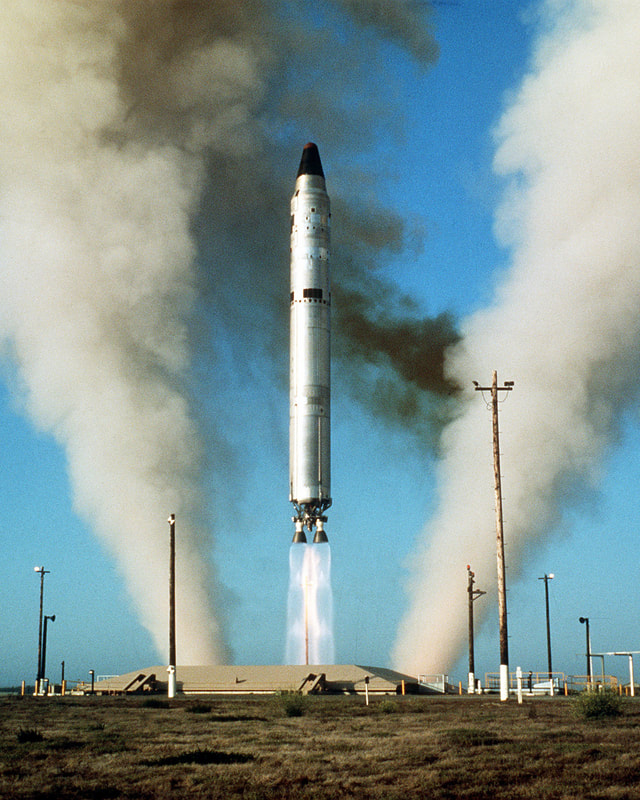
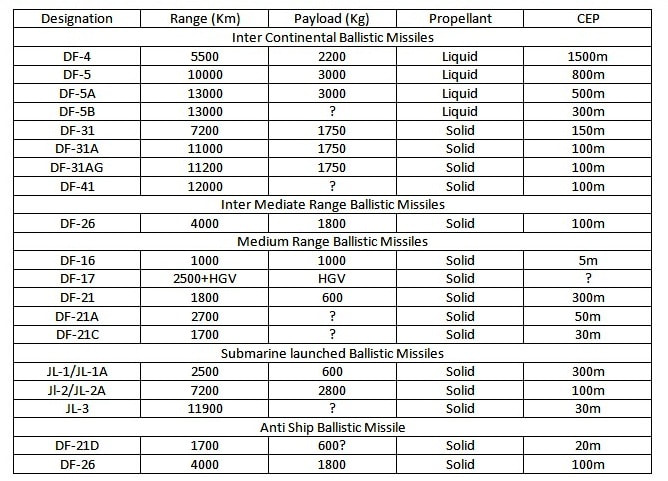


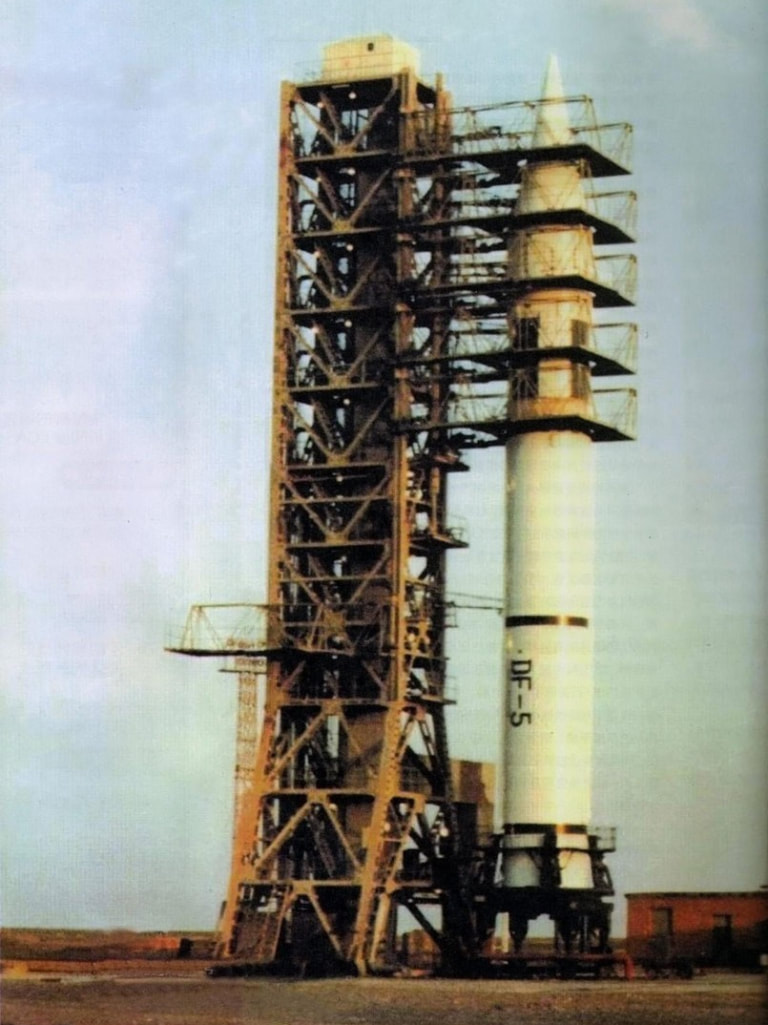
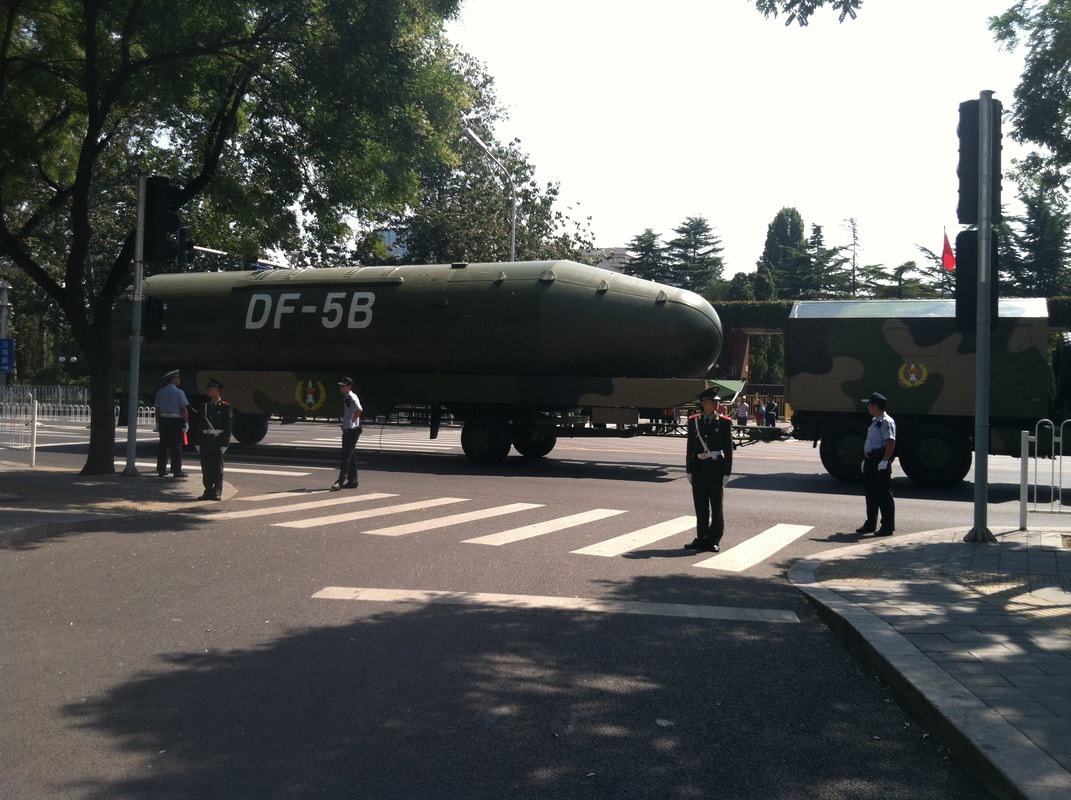

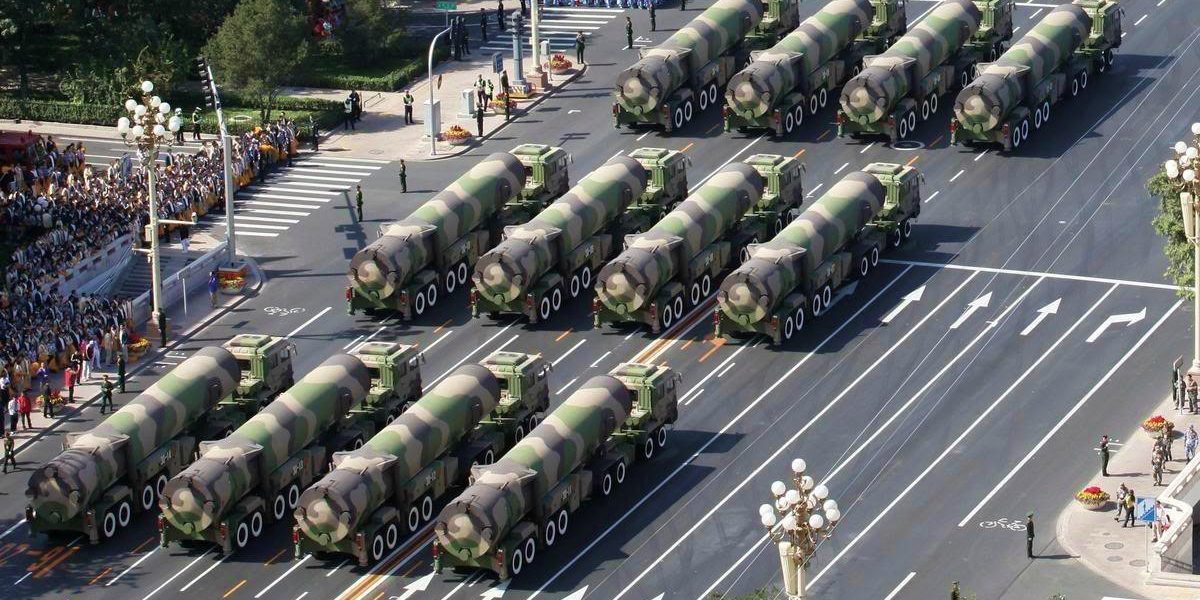

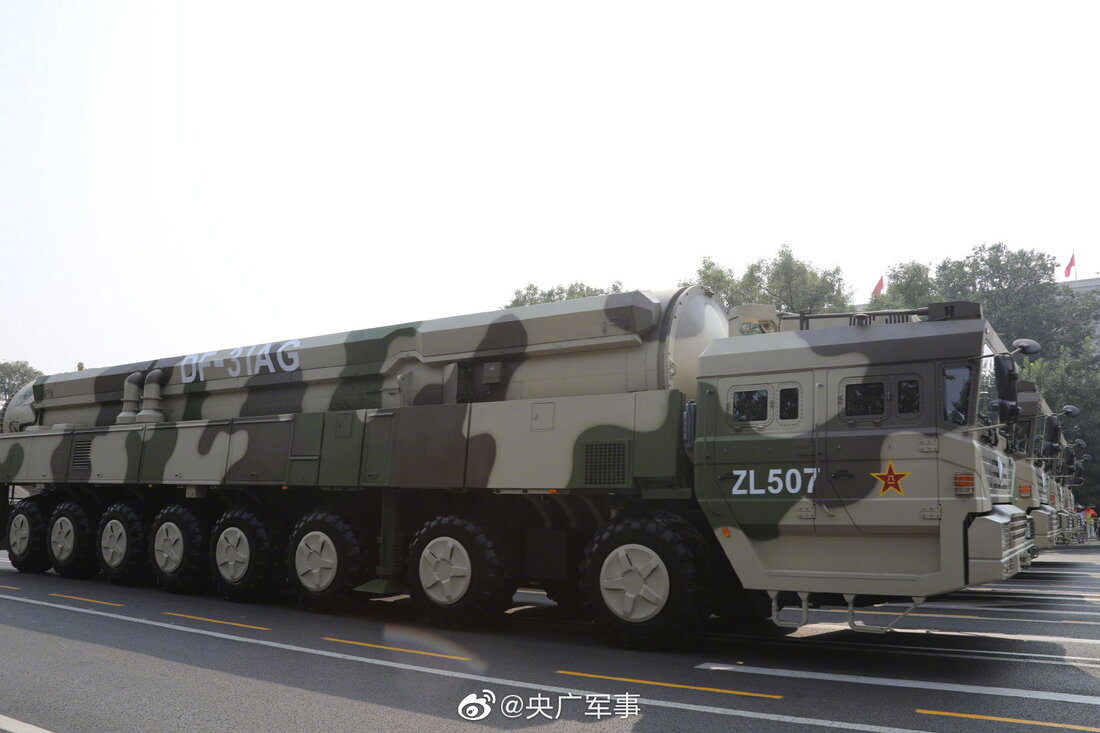

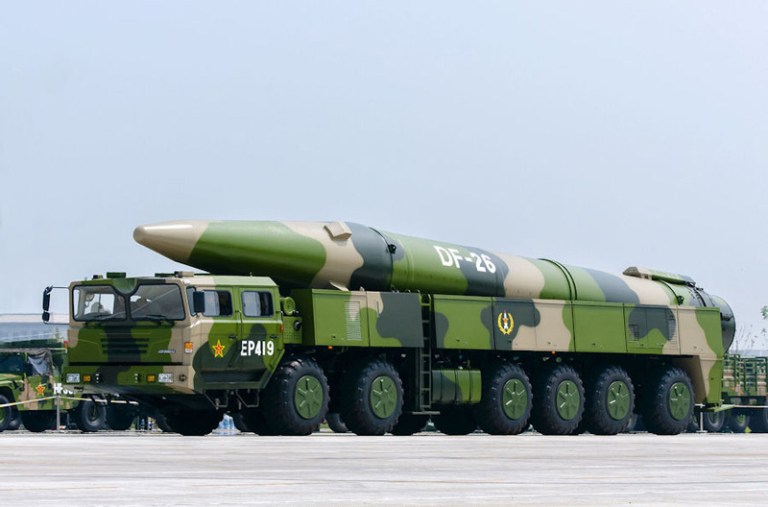
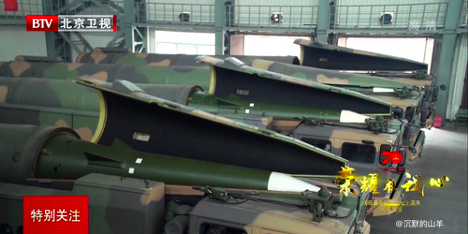

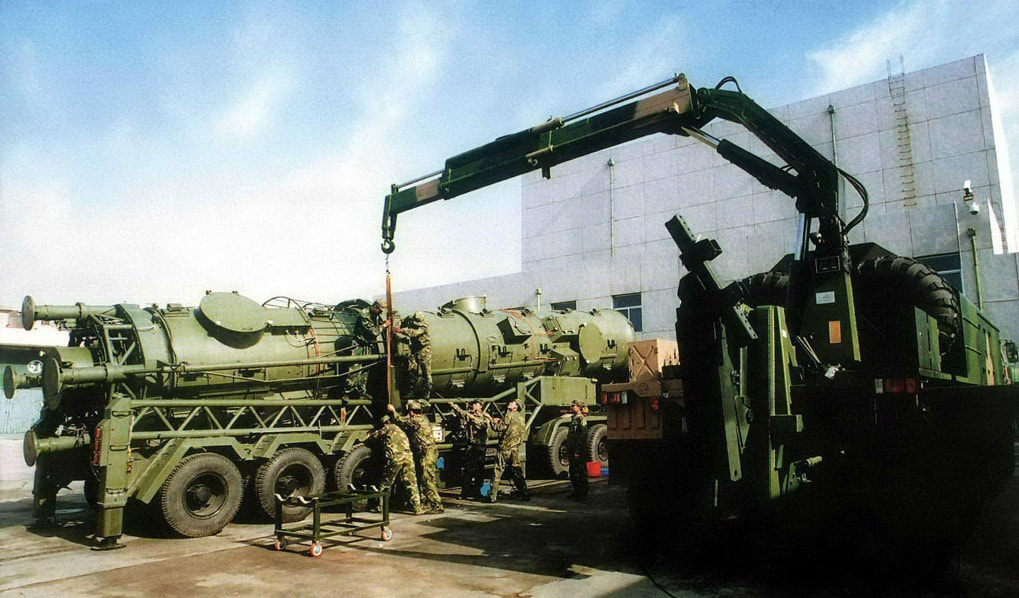
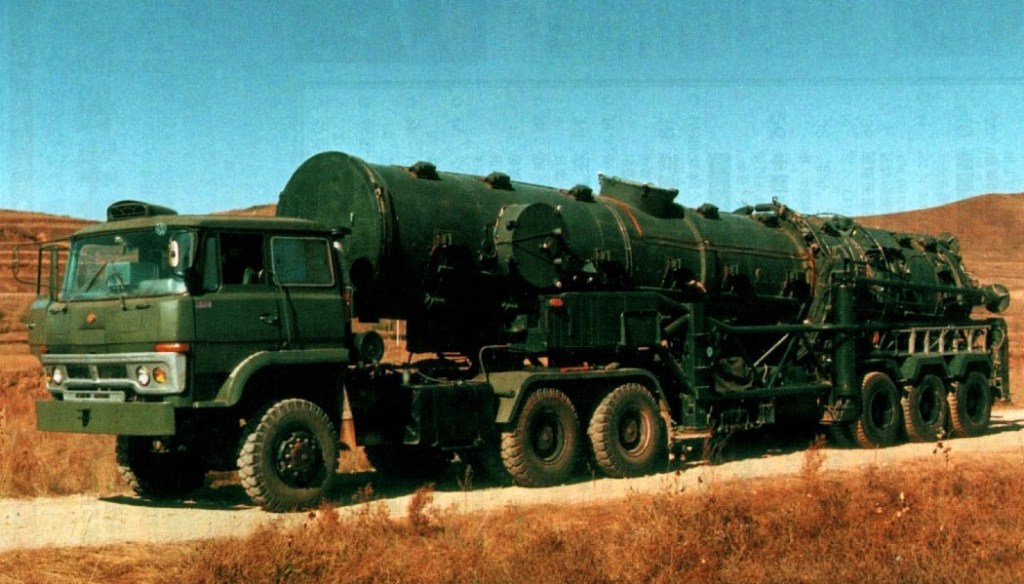
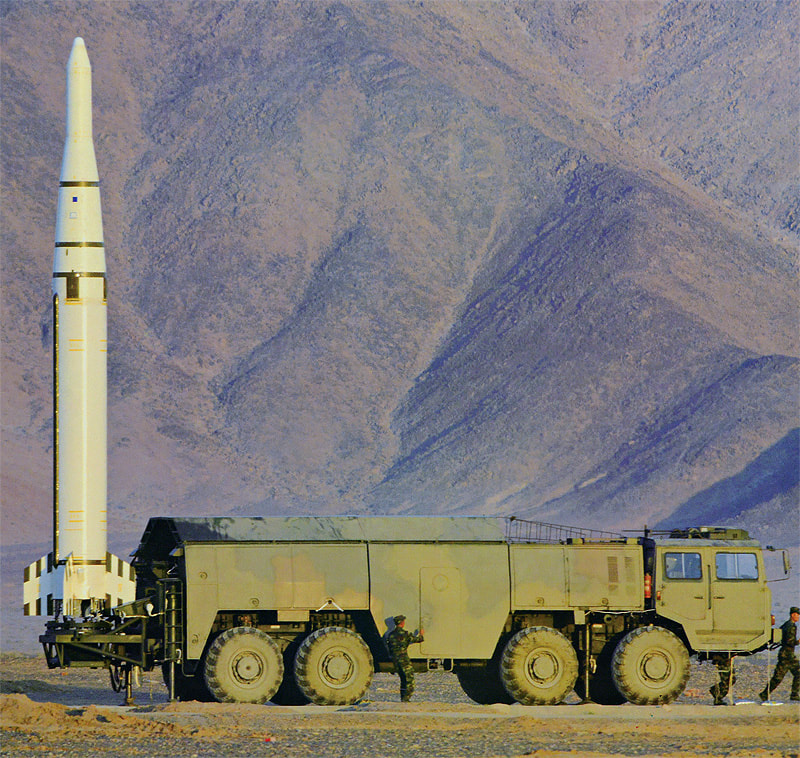

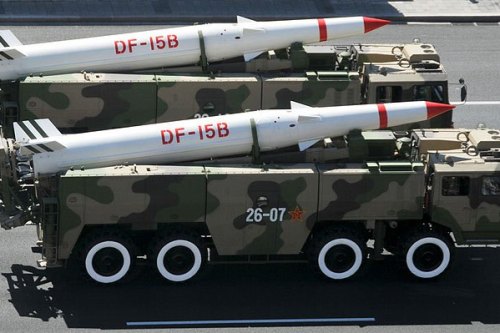

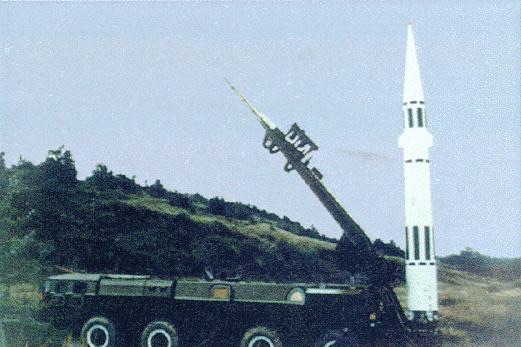
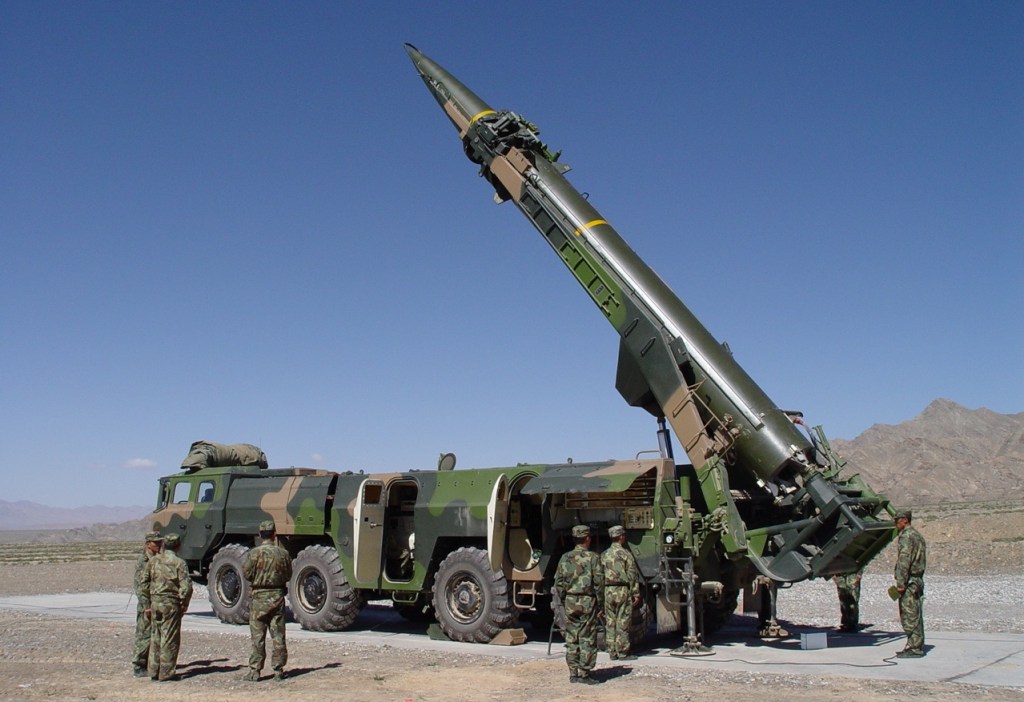
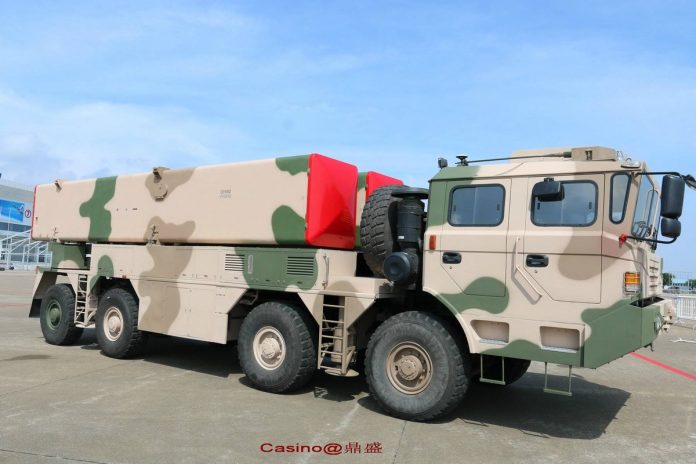


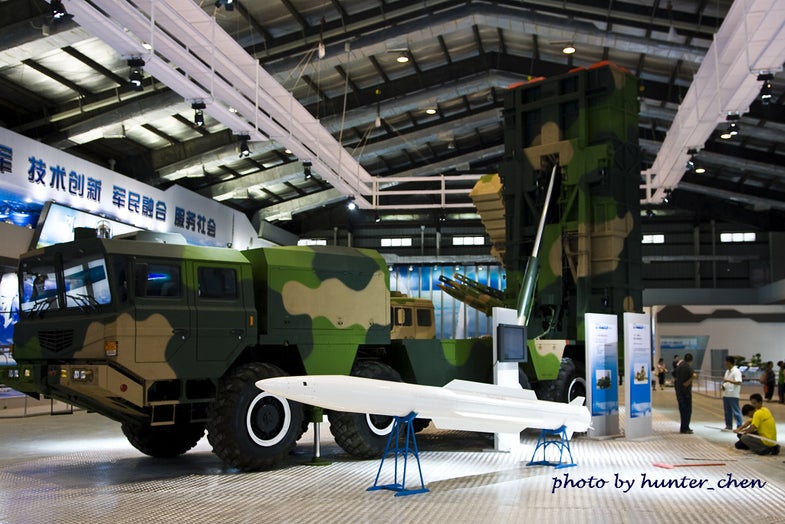
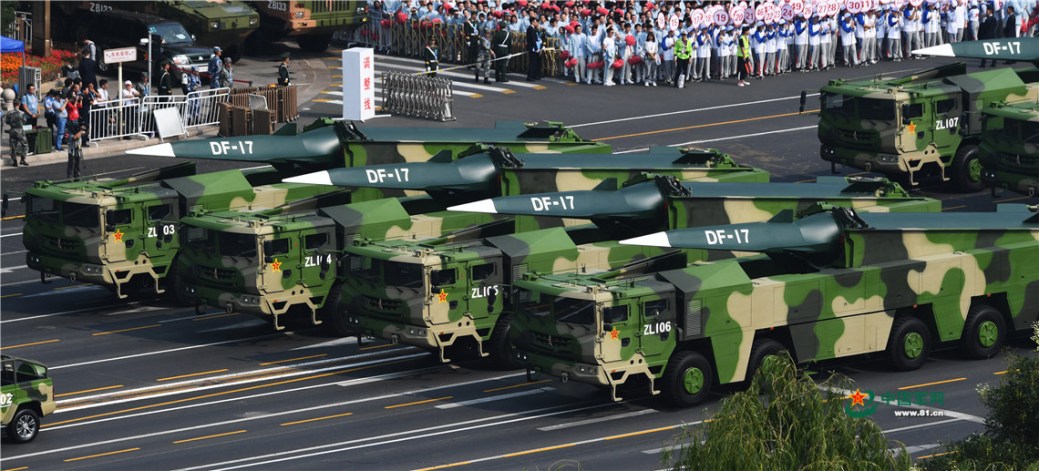
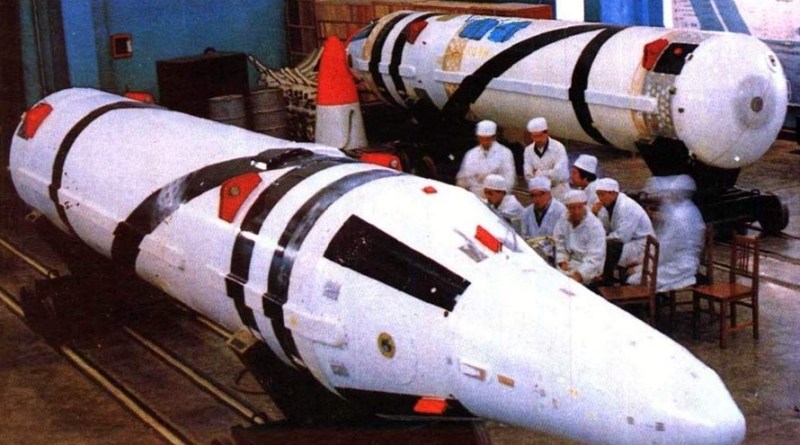
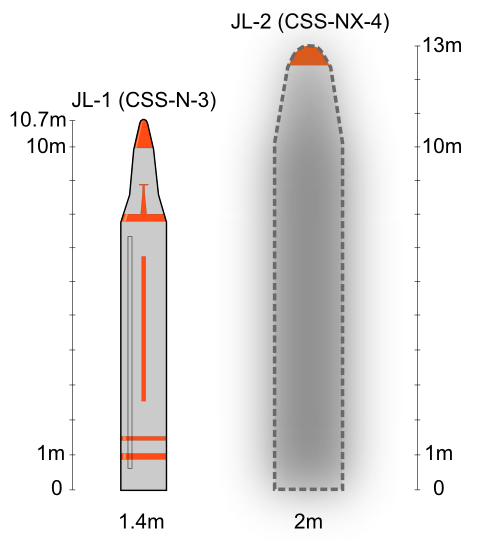

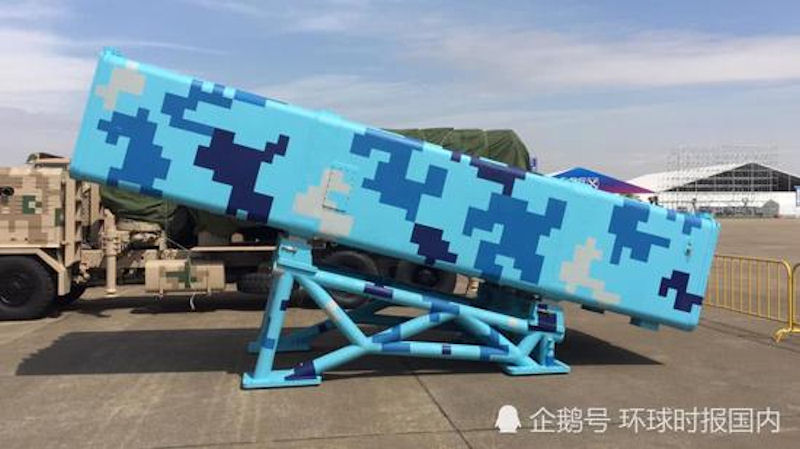
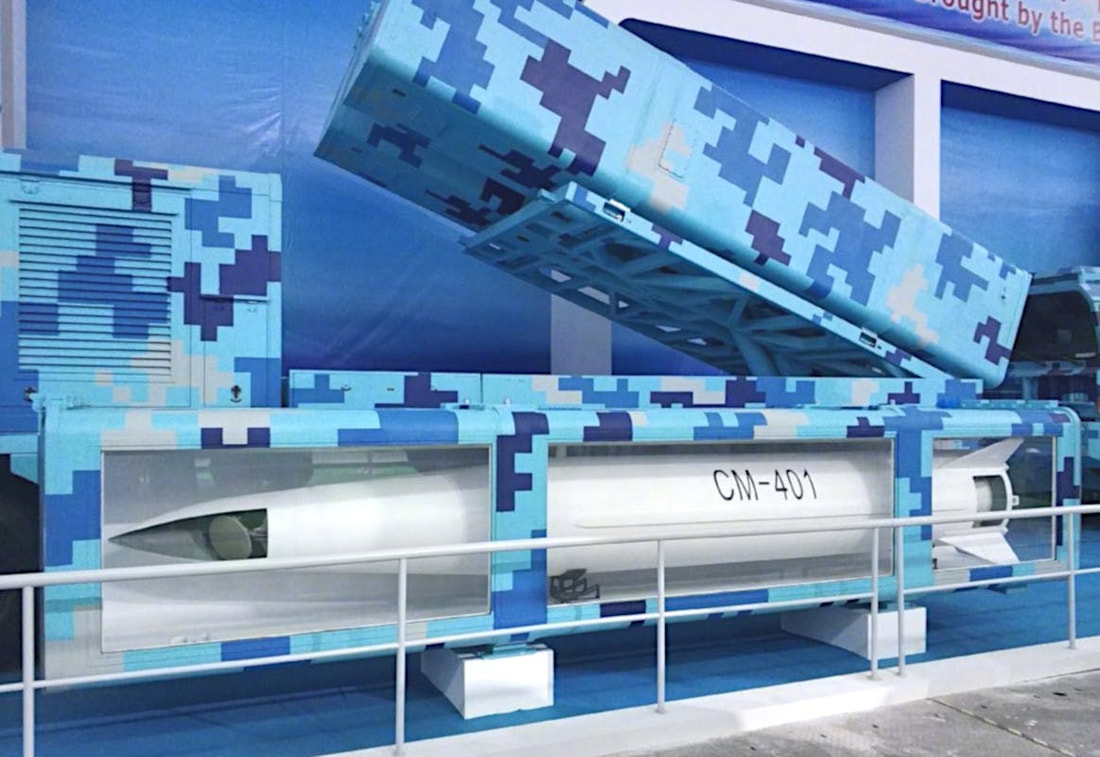
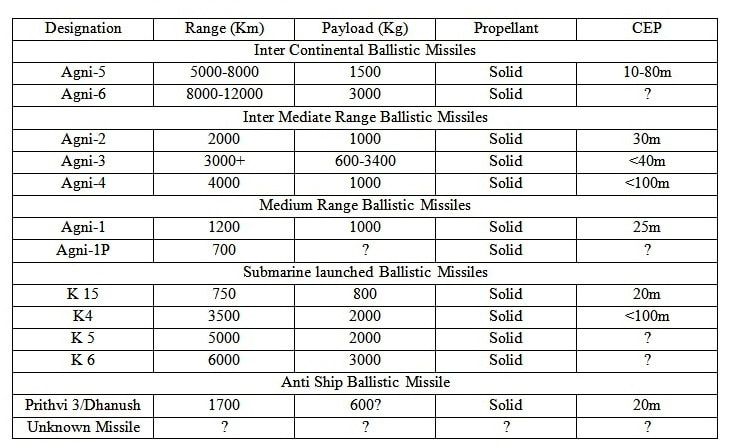
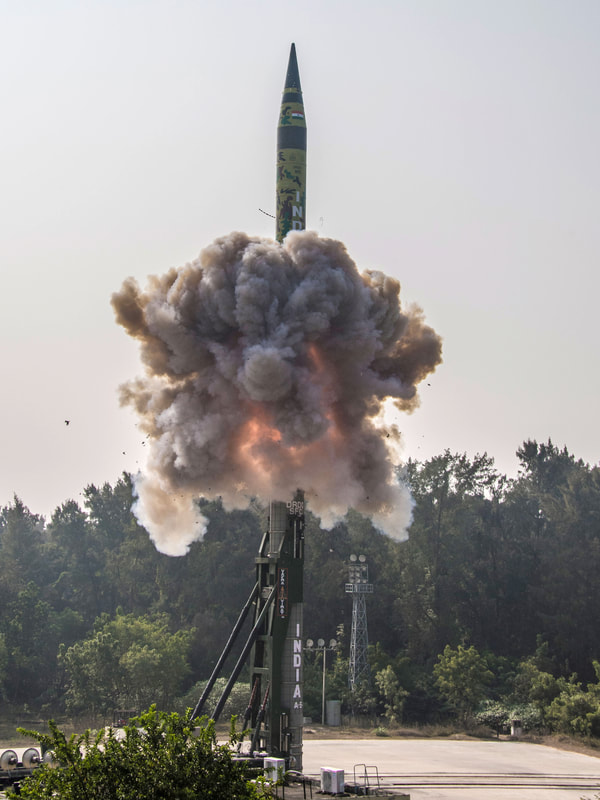
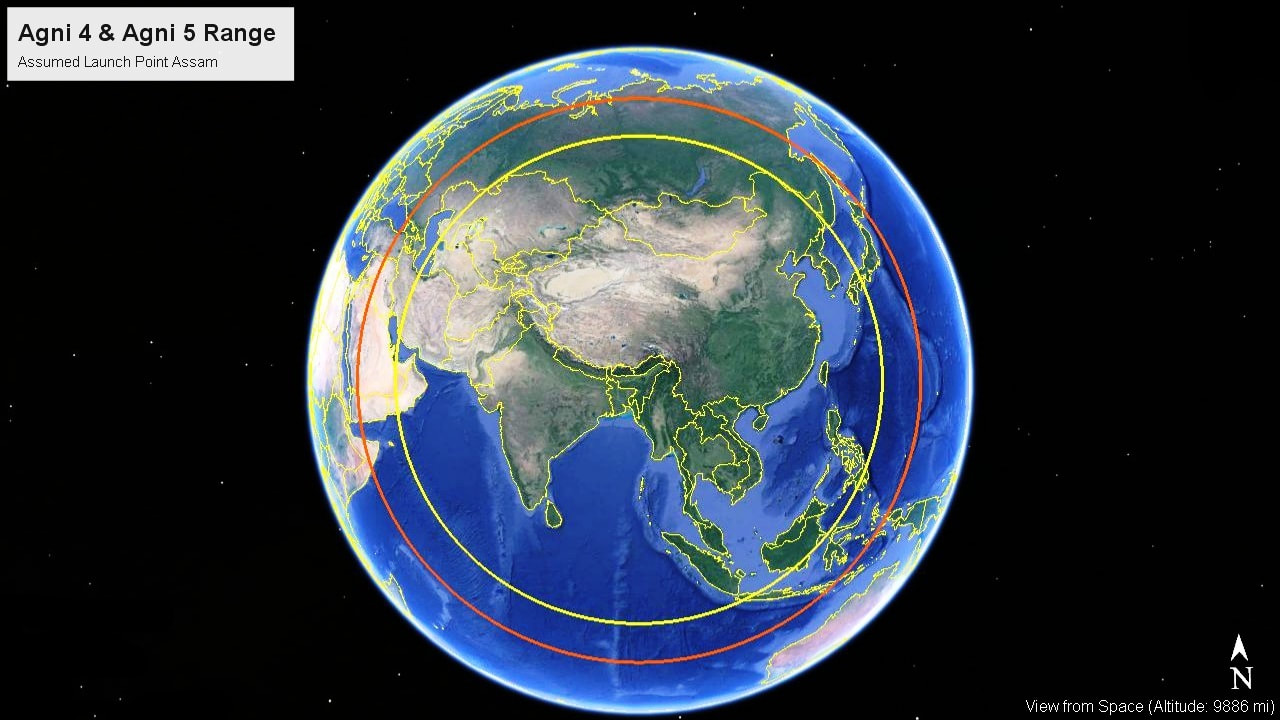
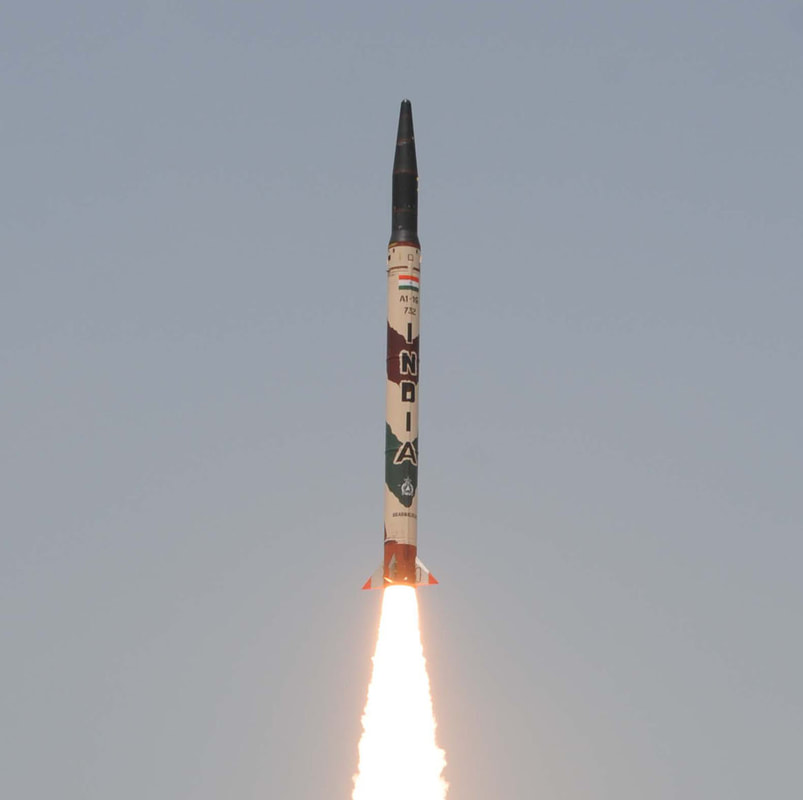

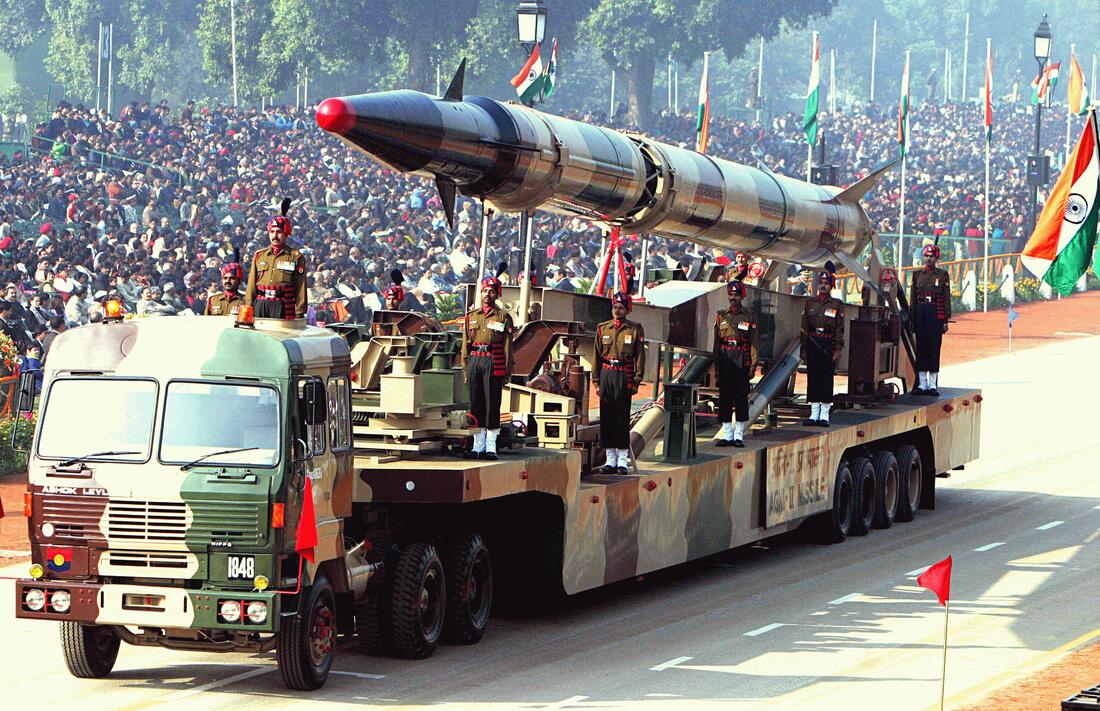
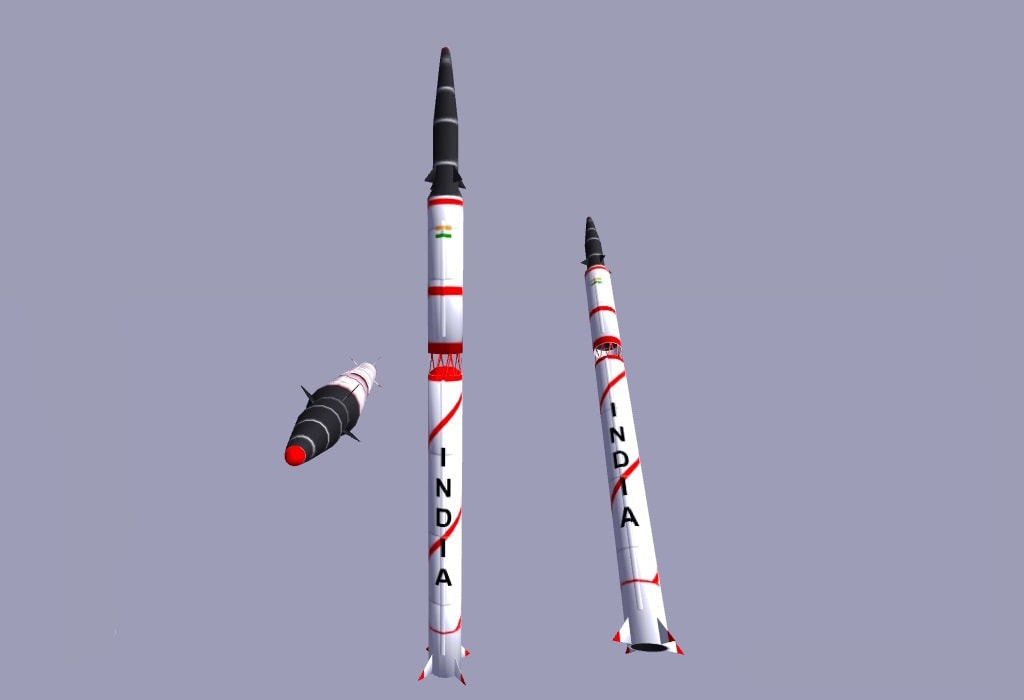

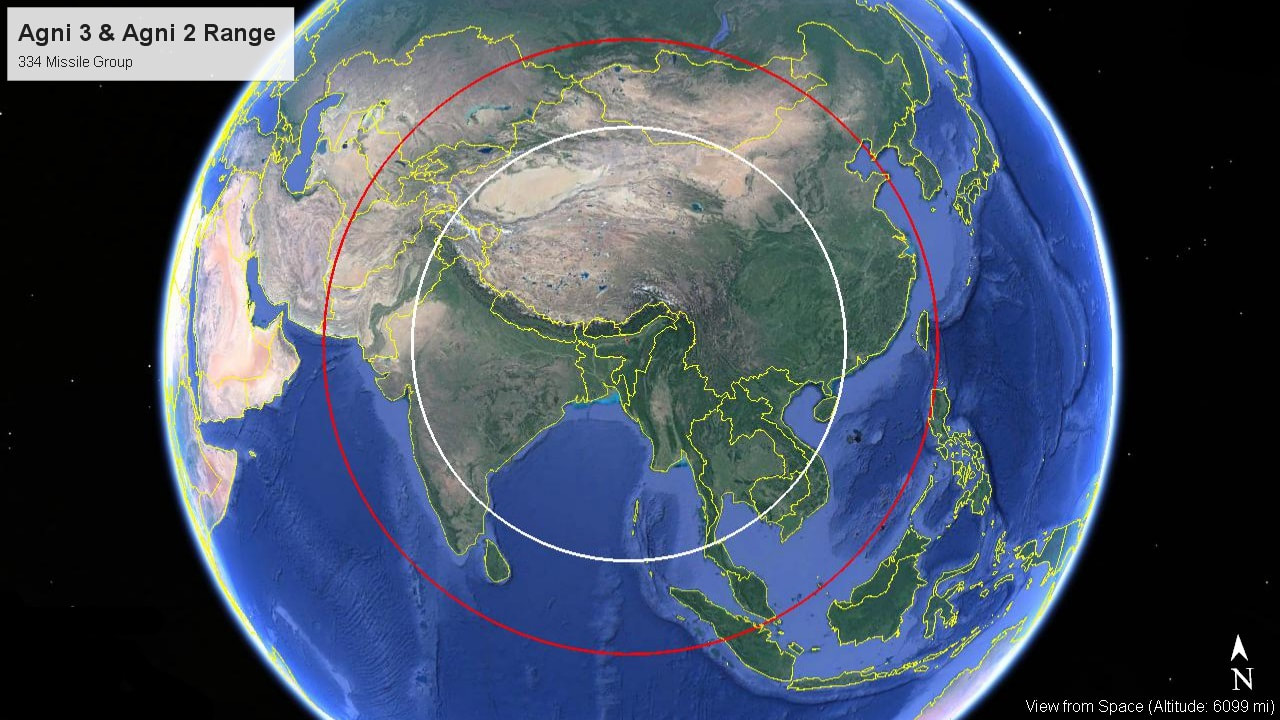
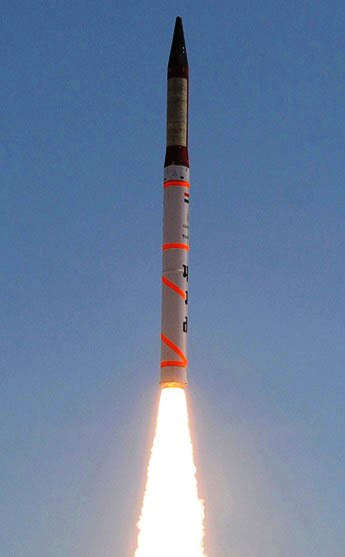
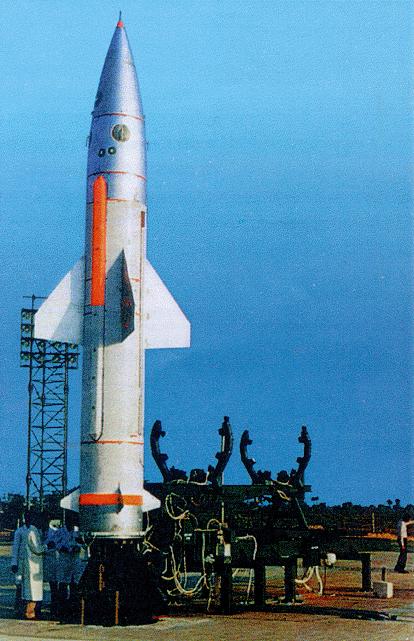
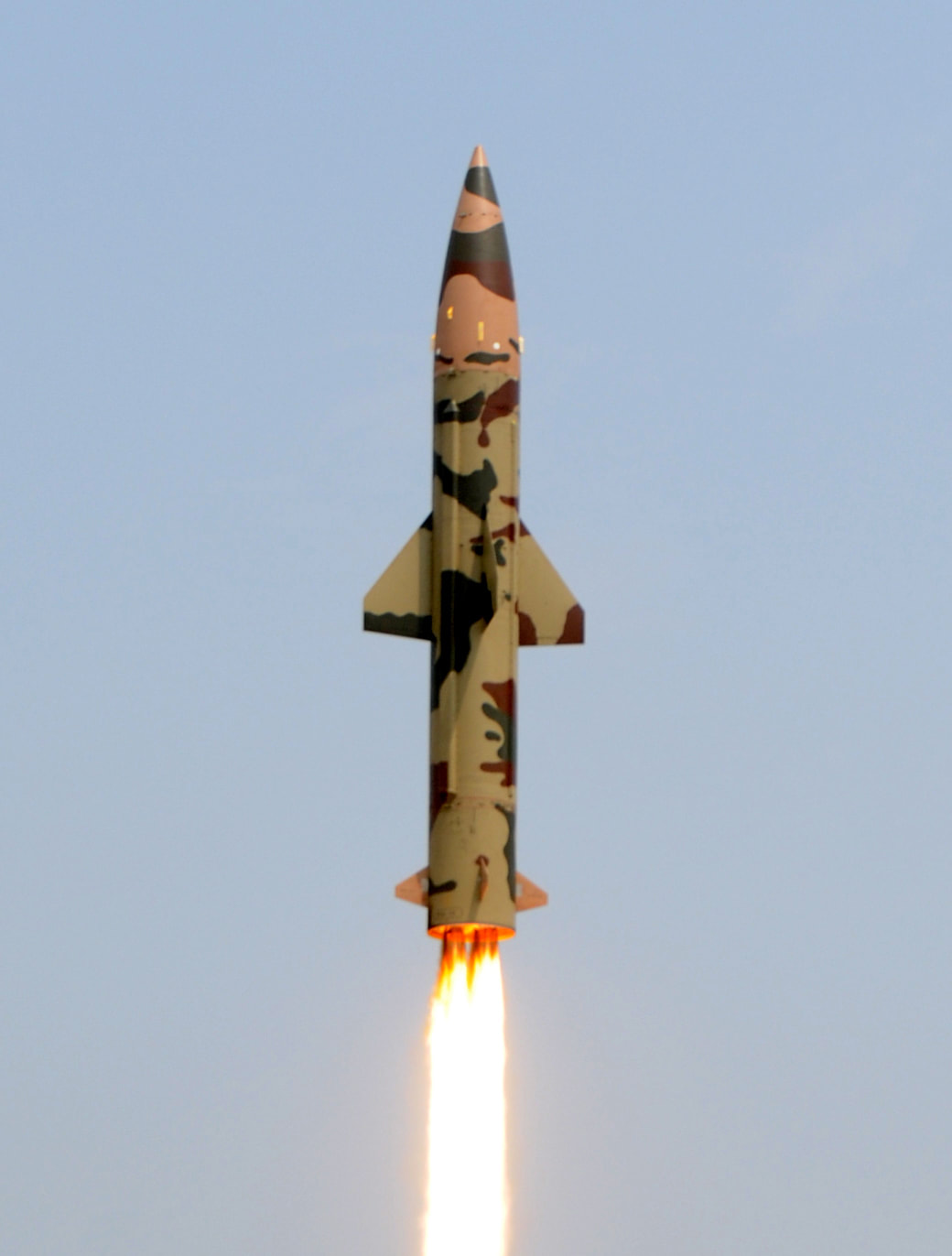

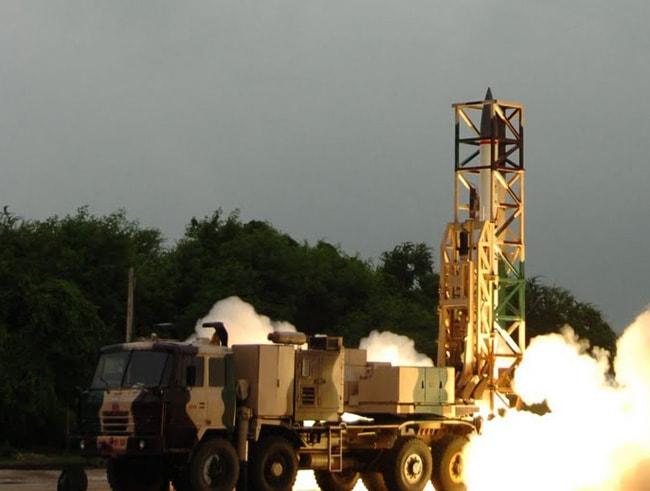
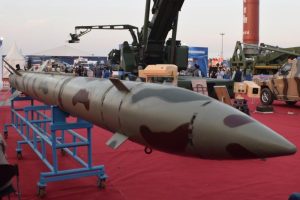
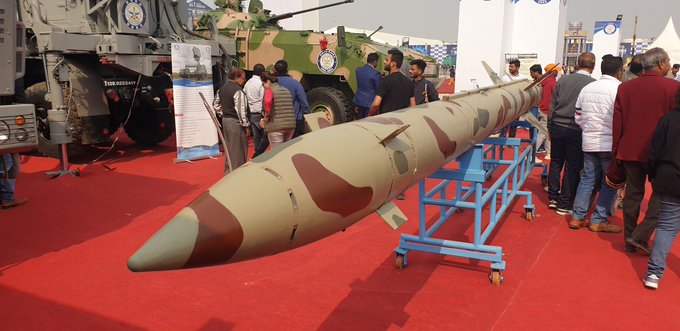
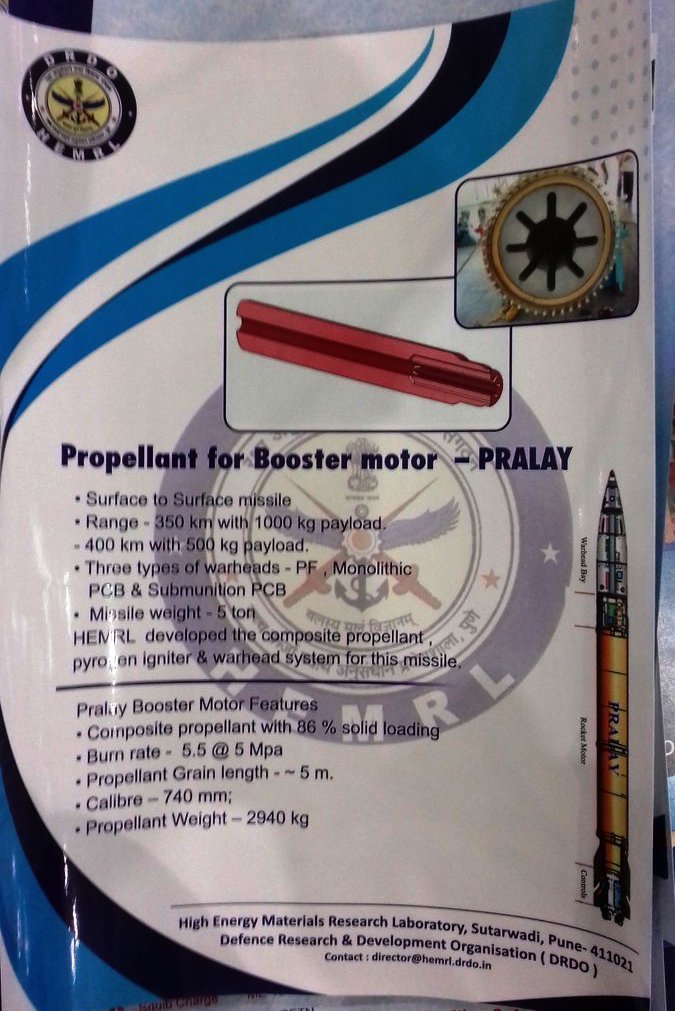
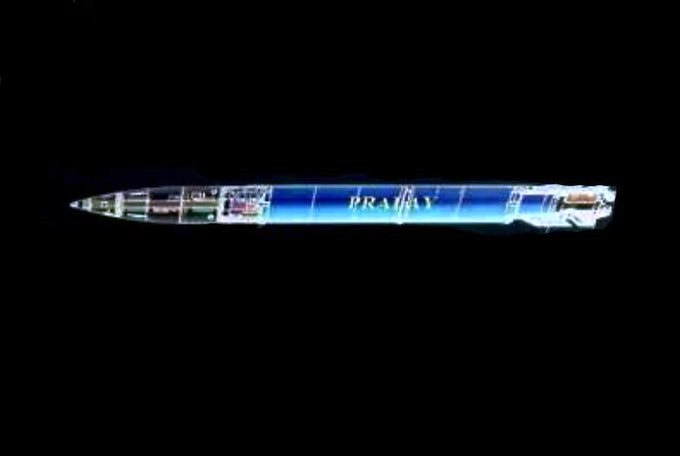
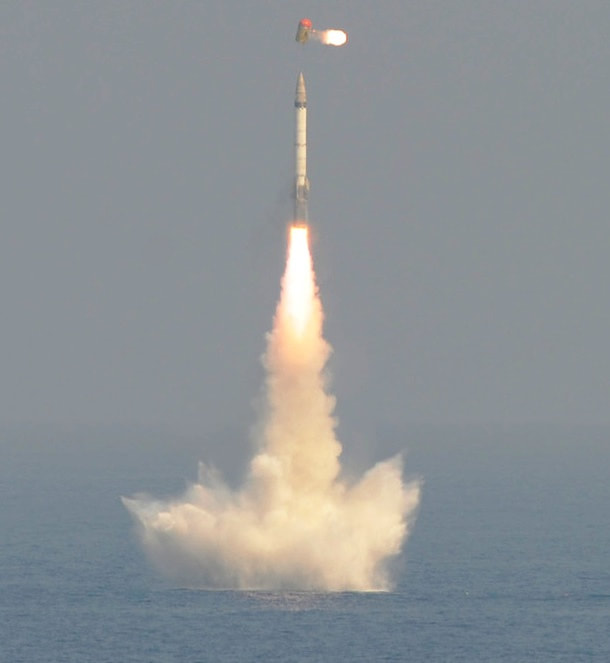
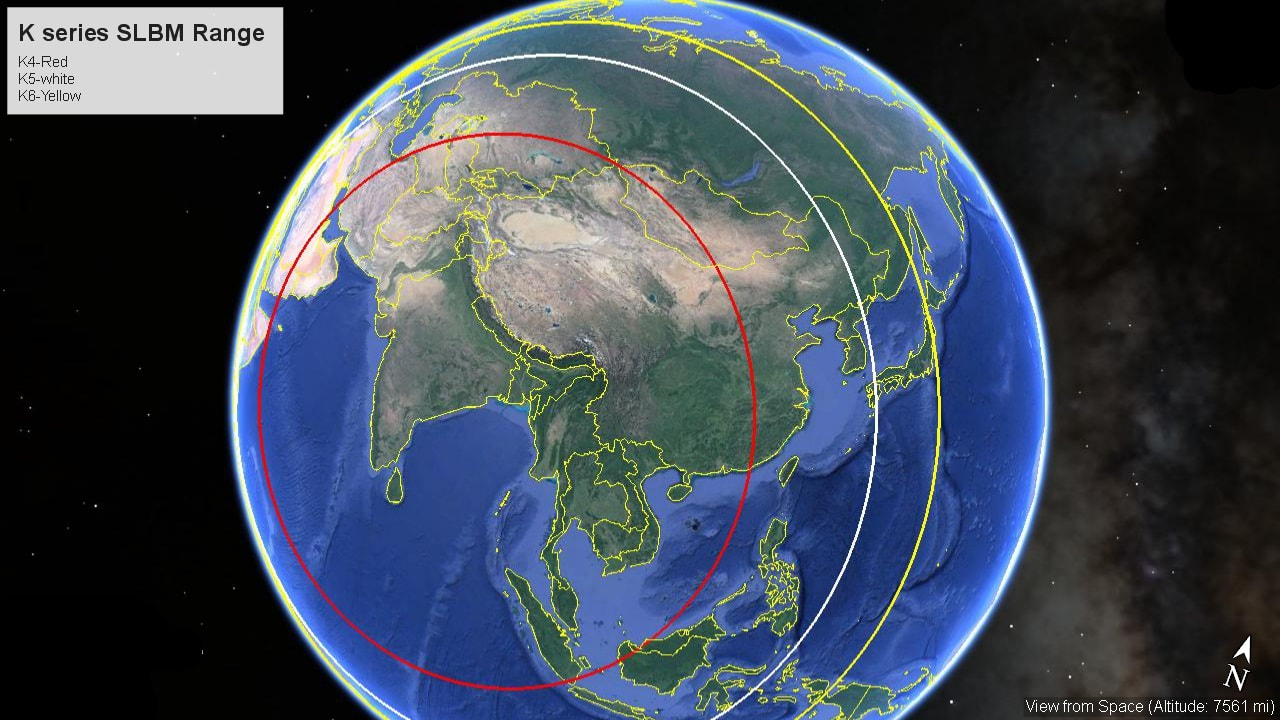
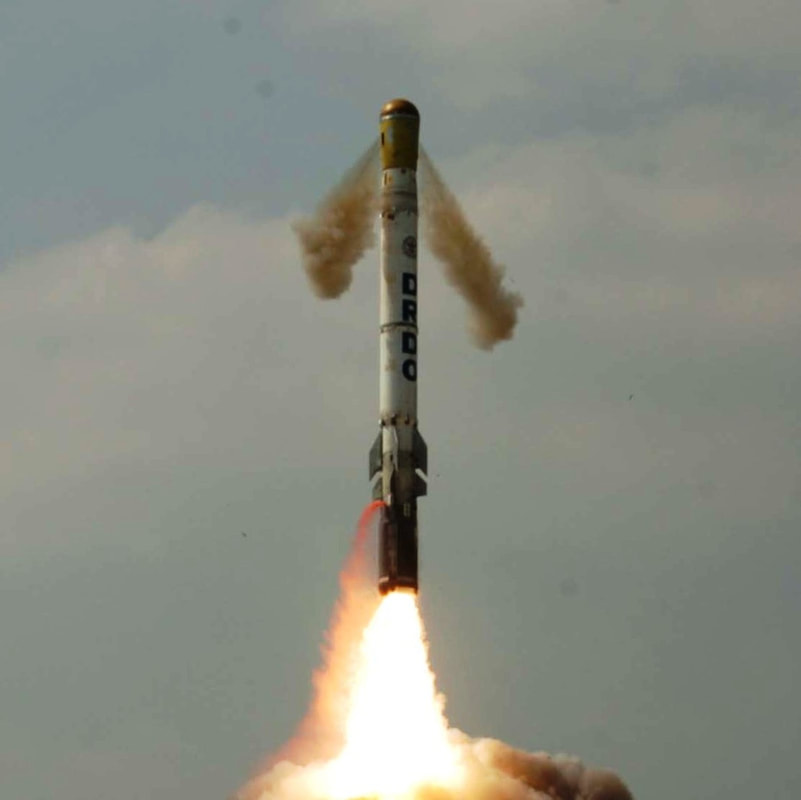

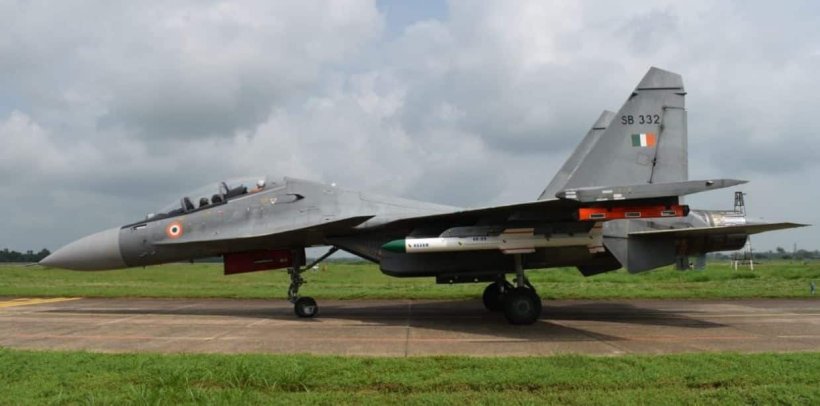

 RSS Feed
RSS Feed
